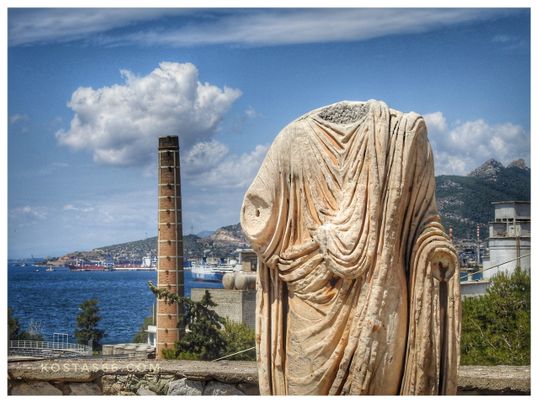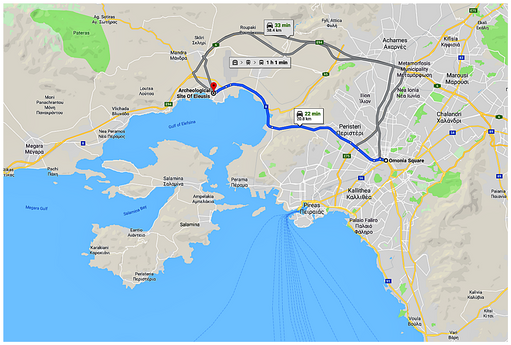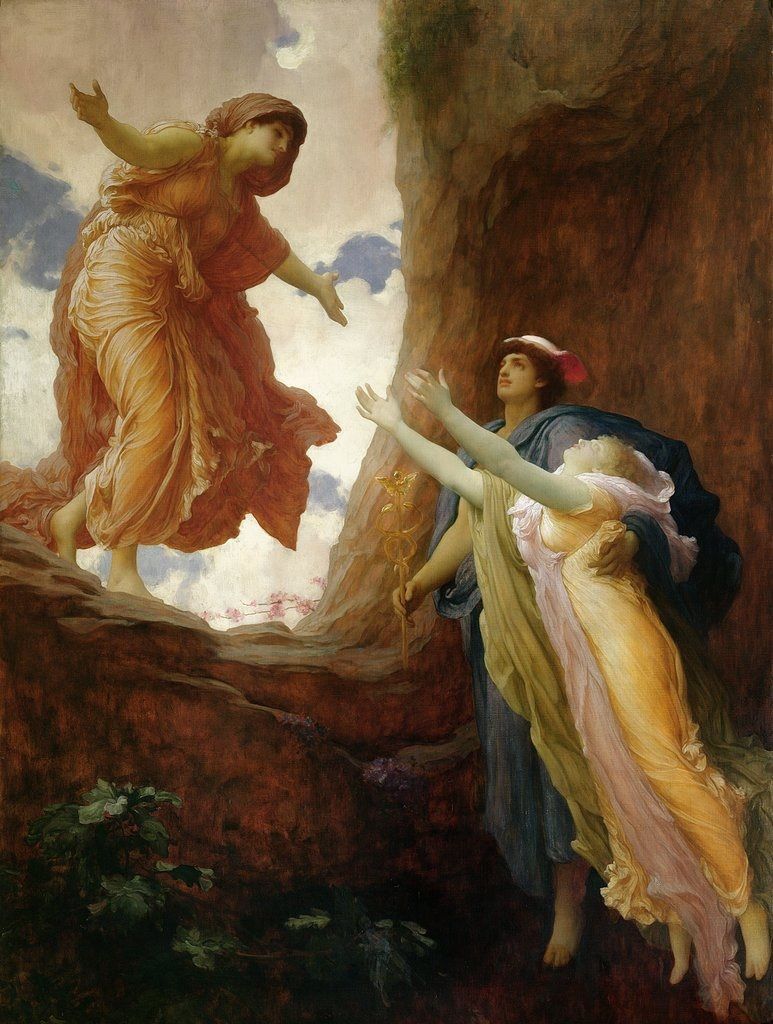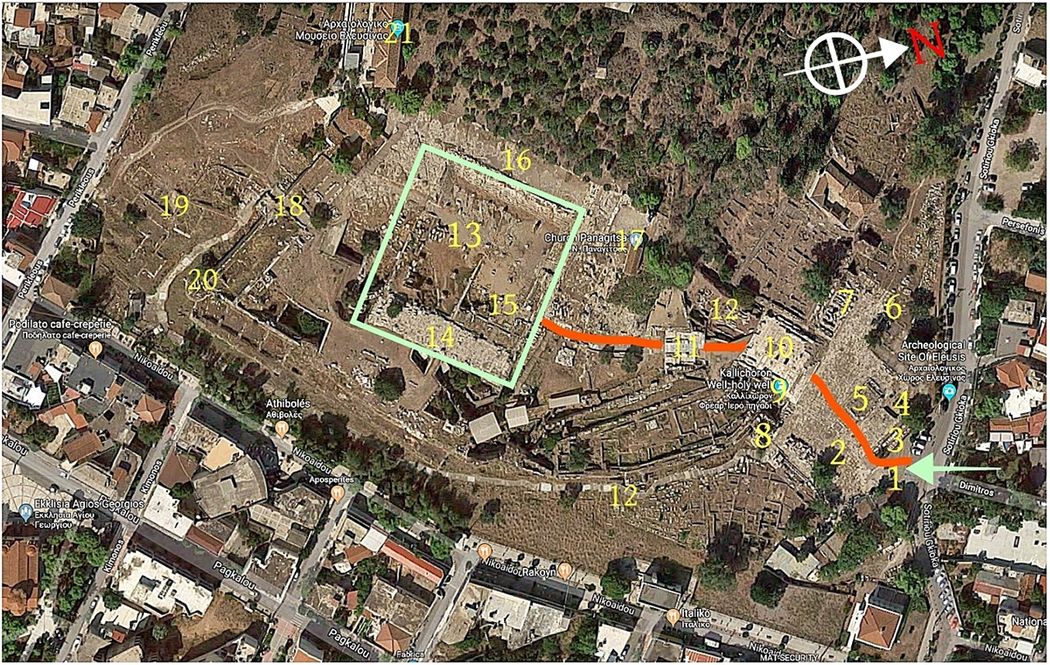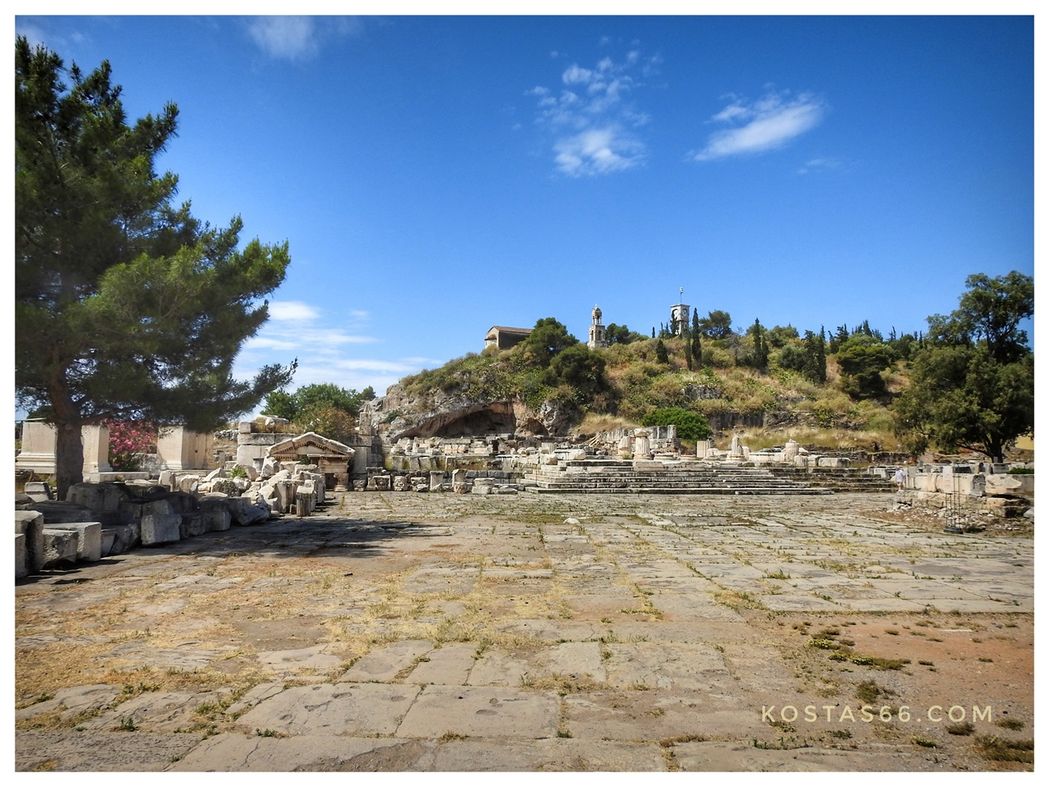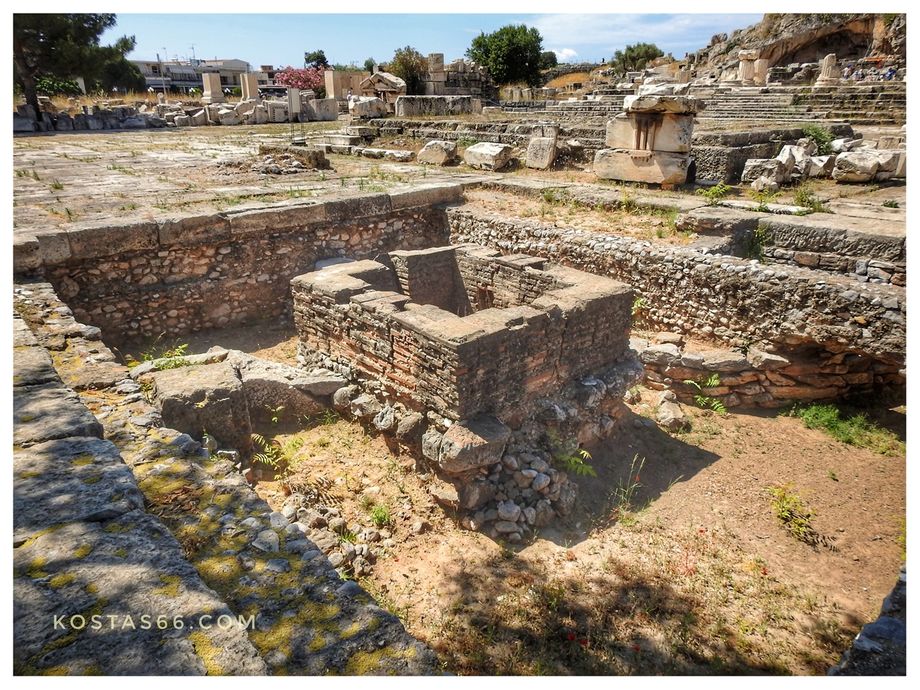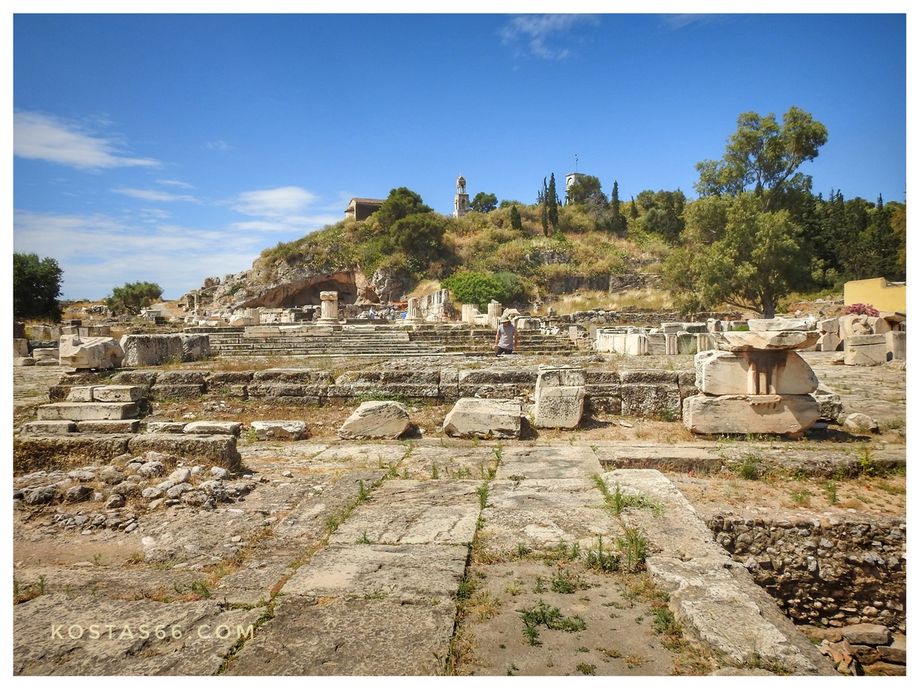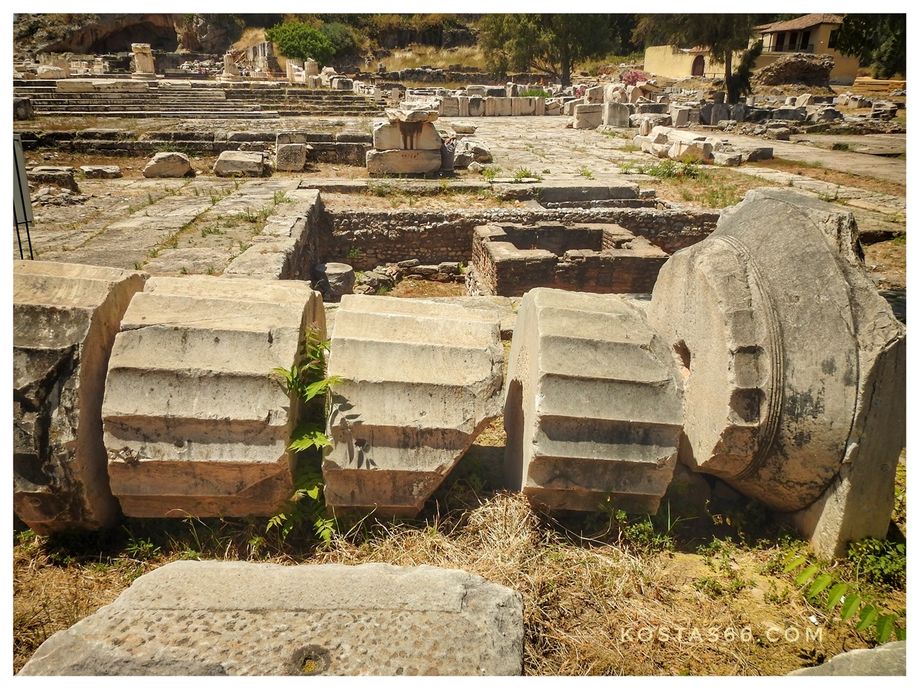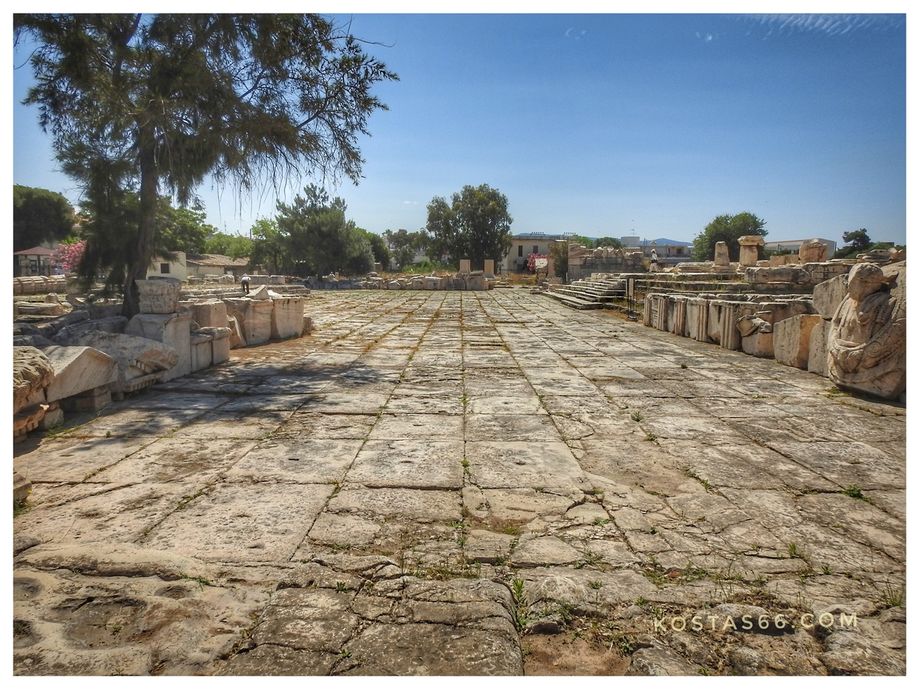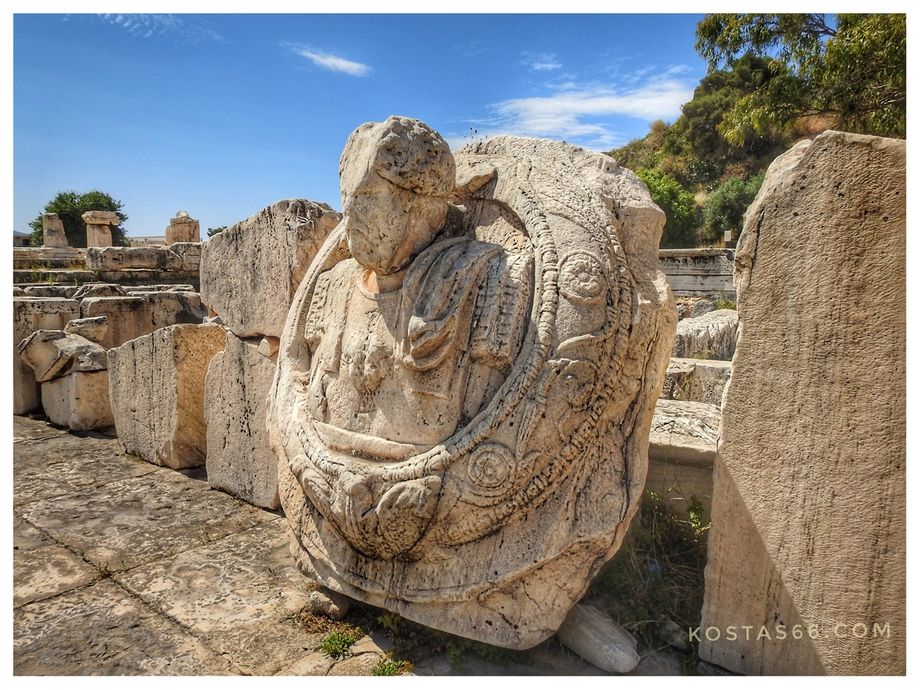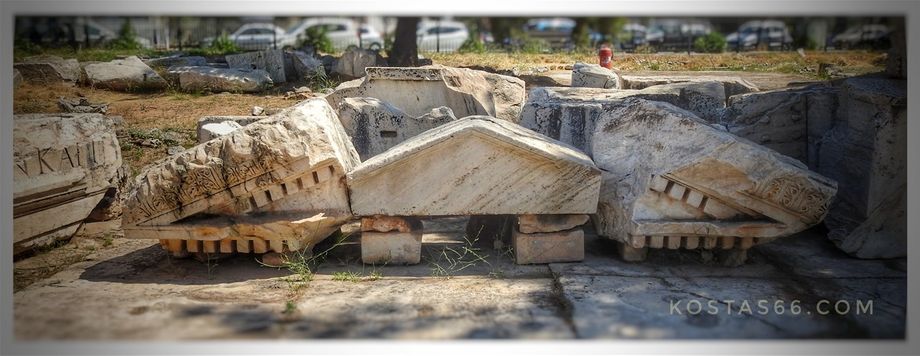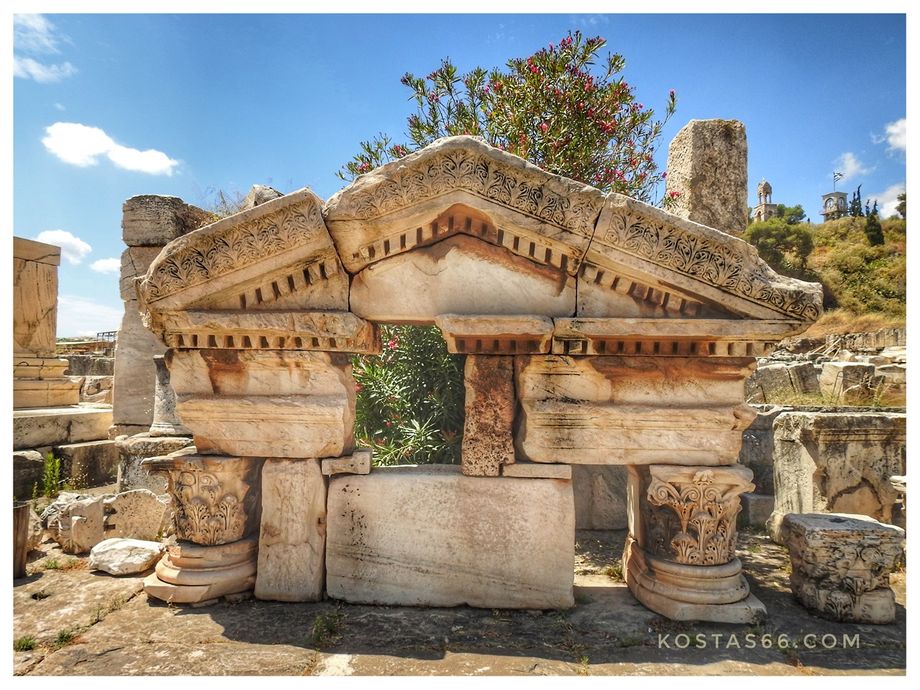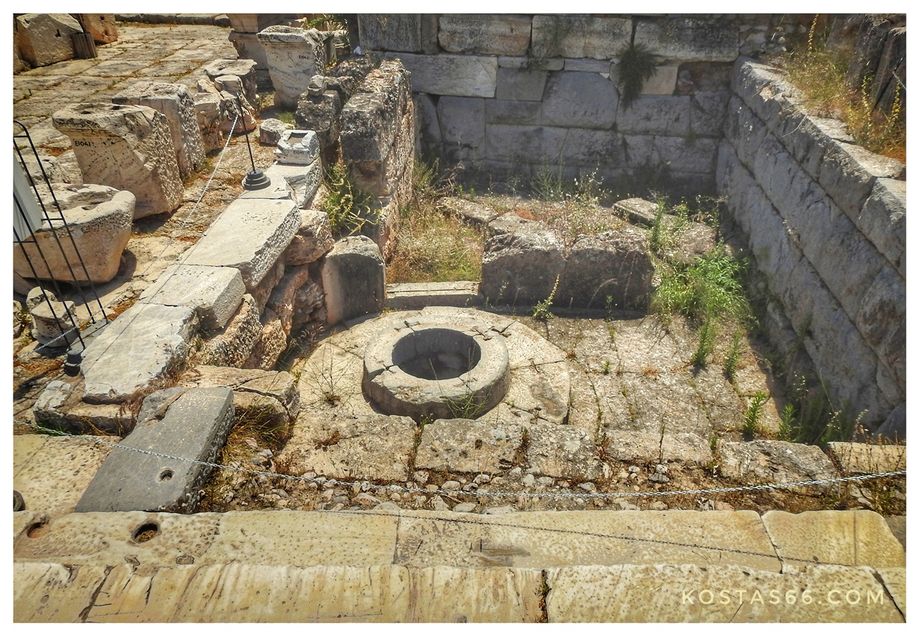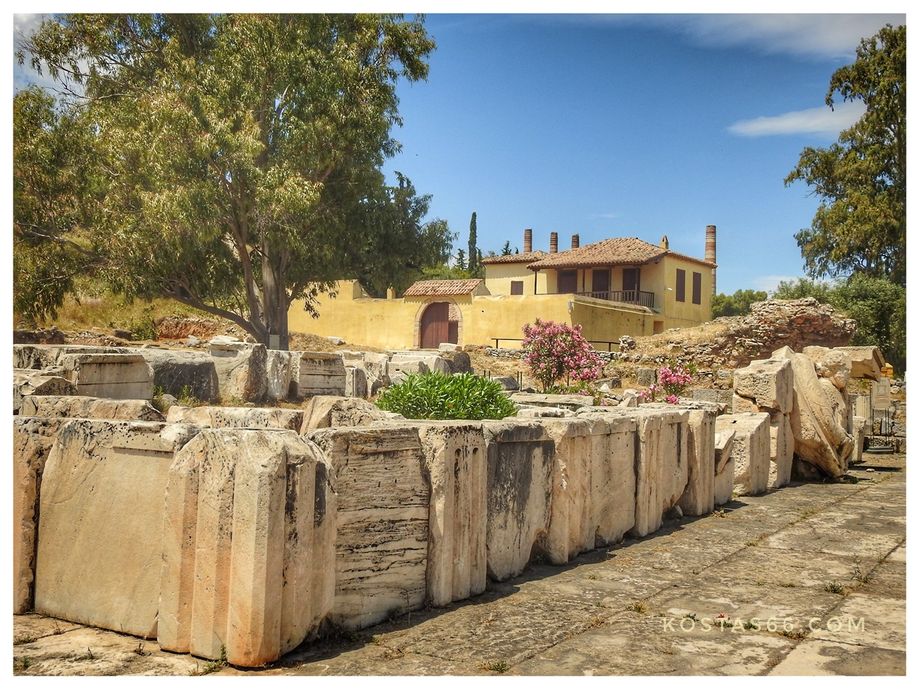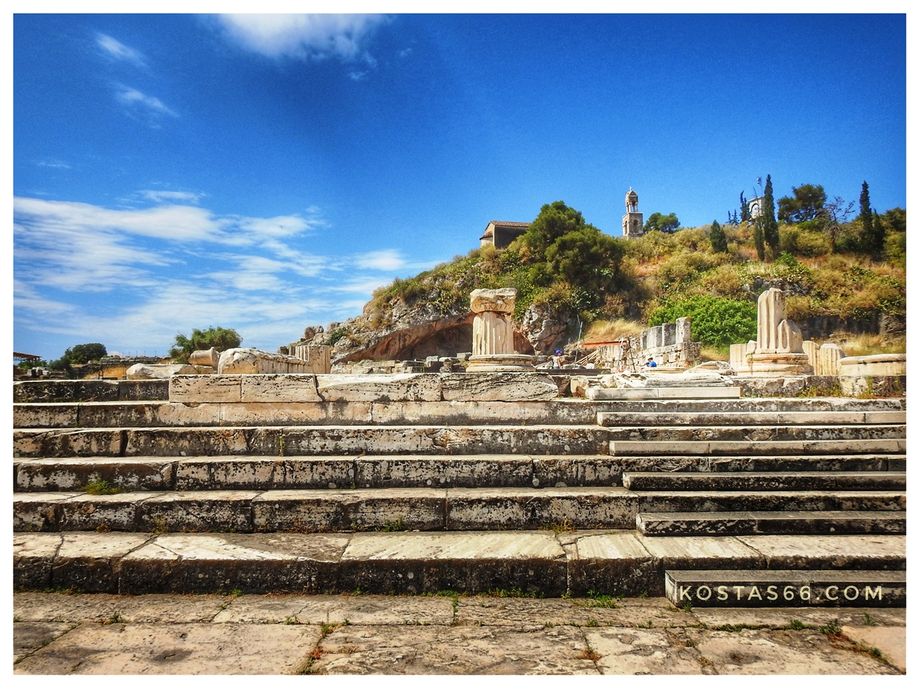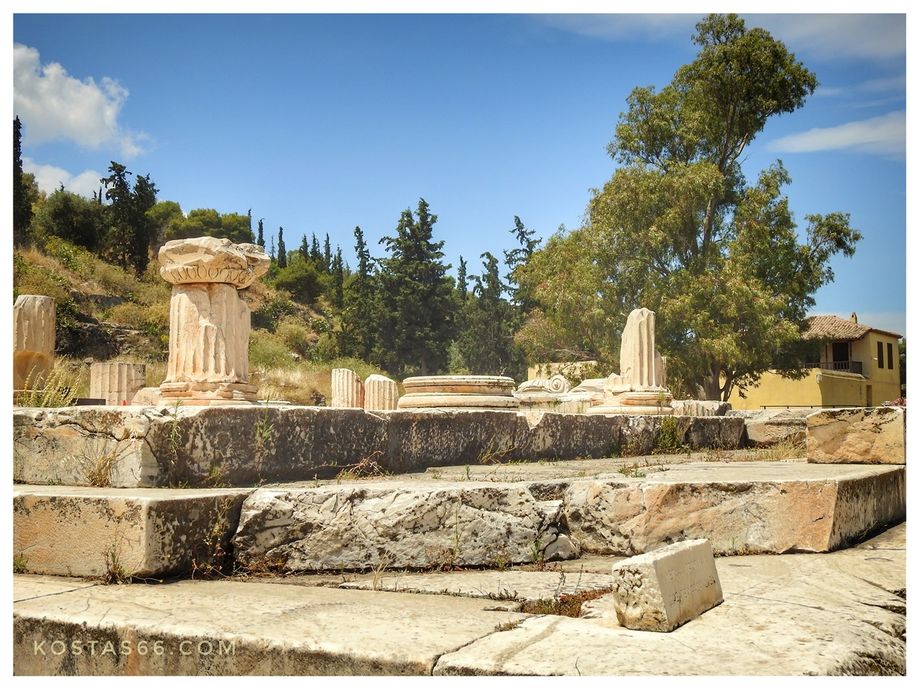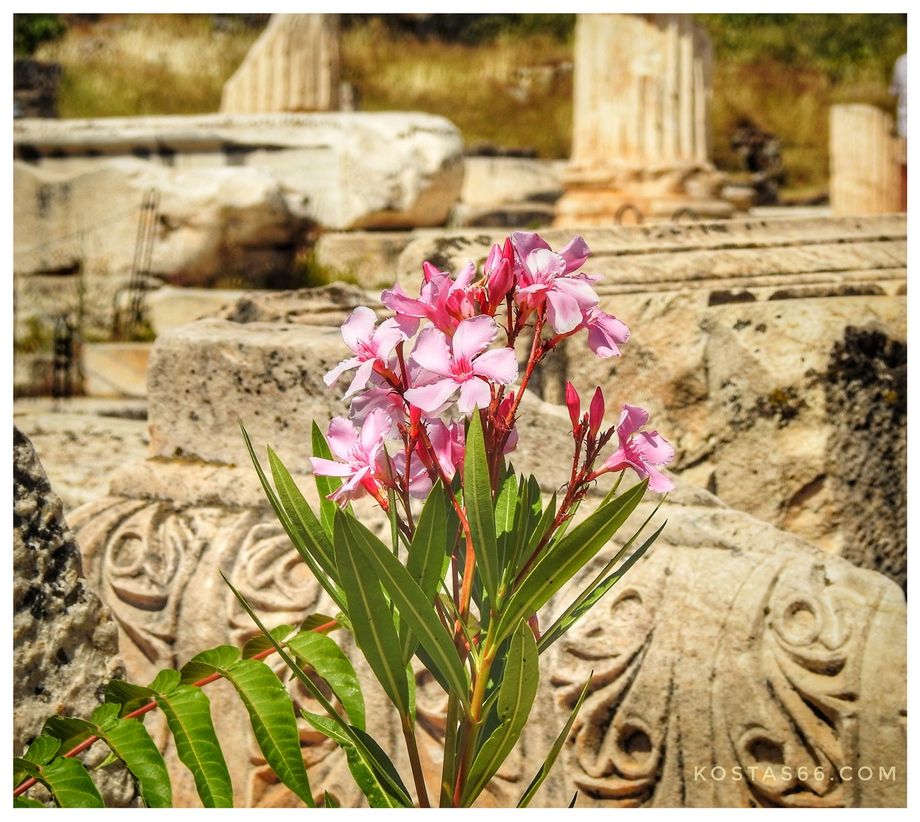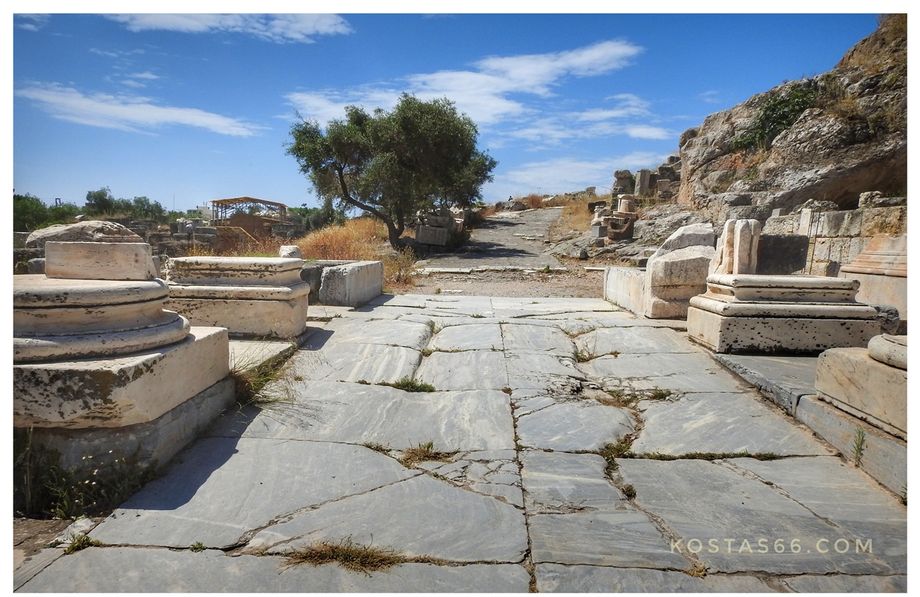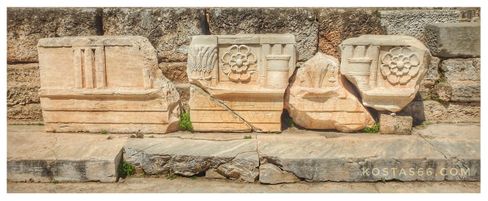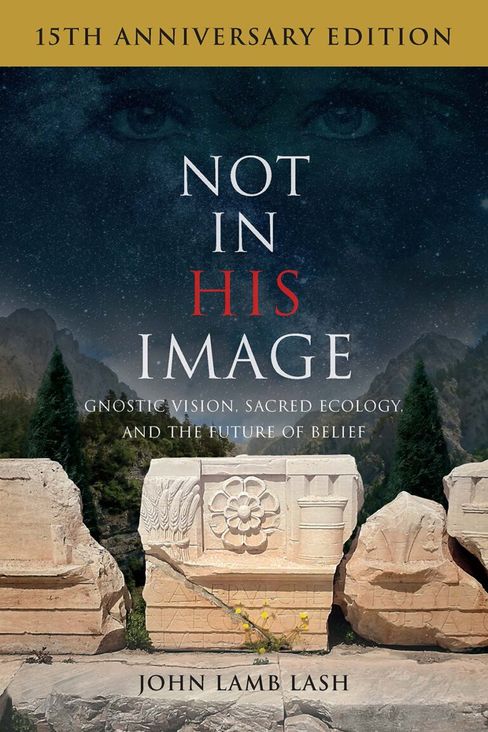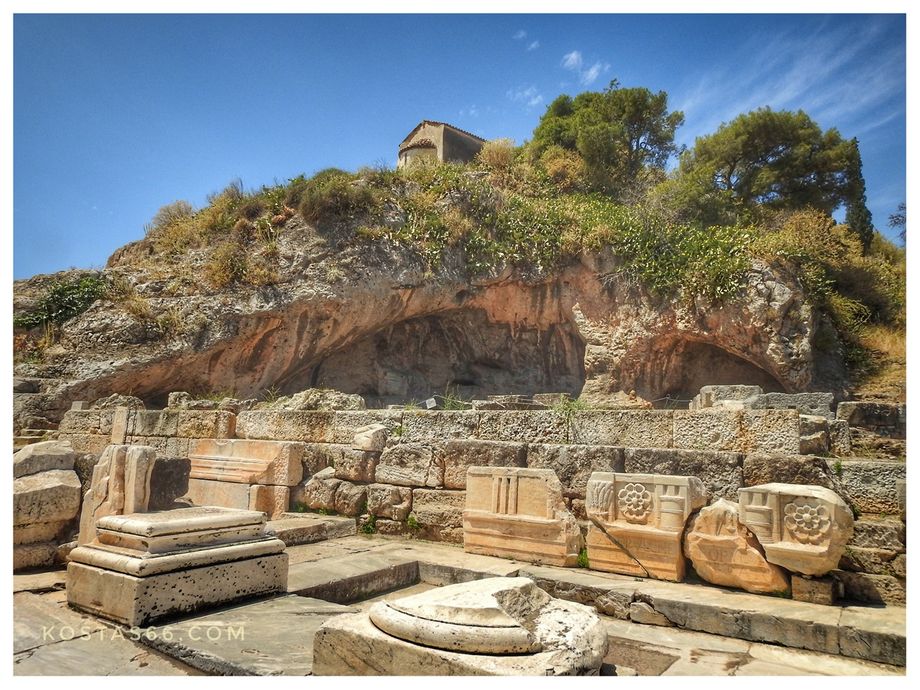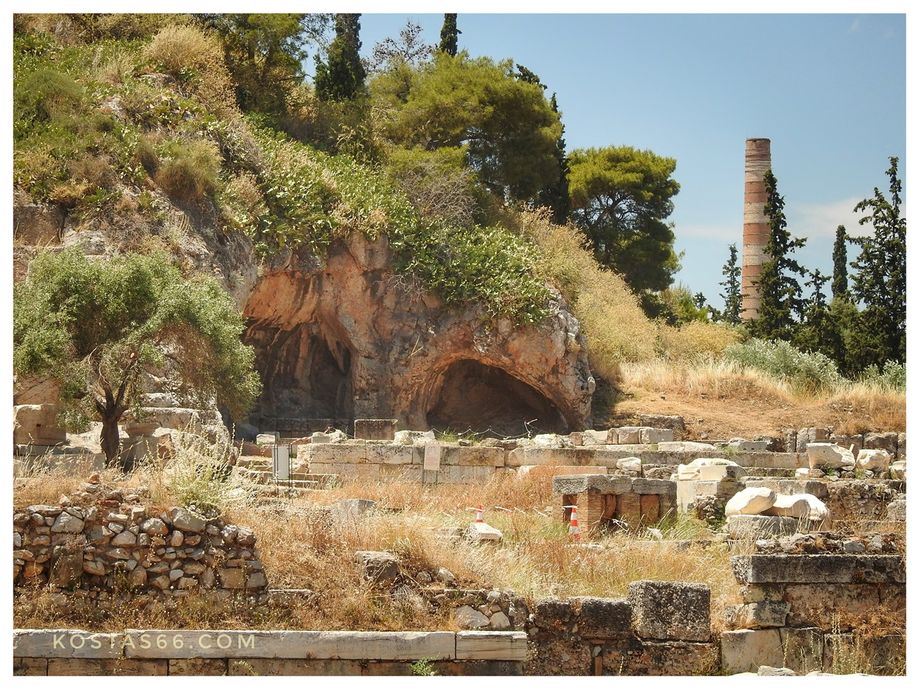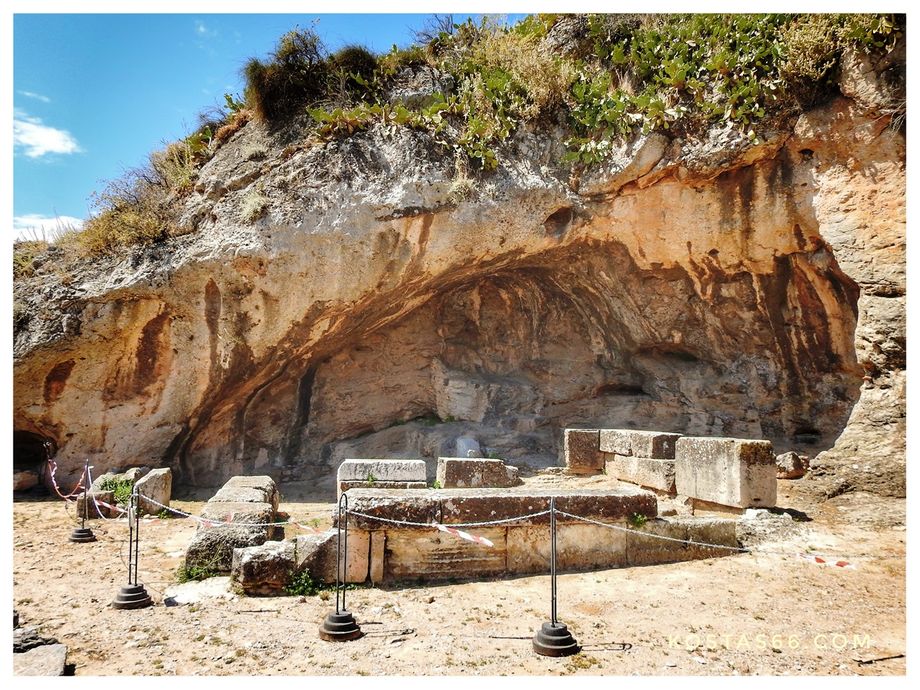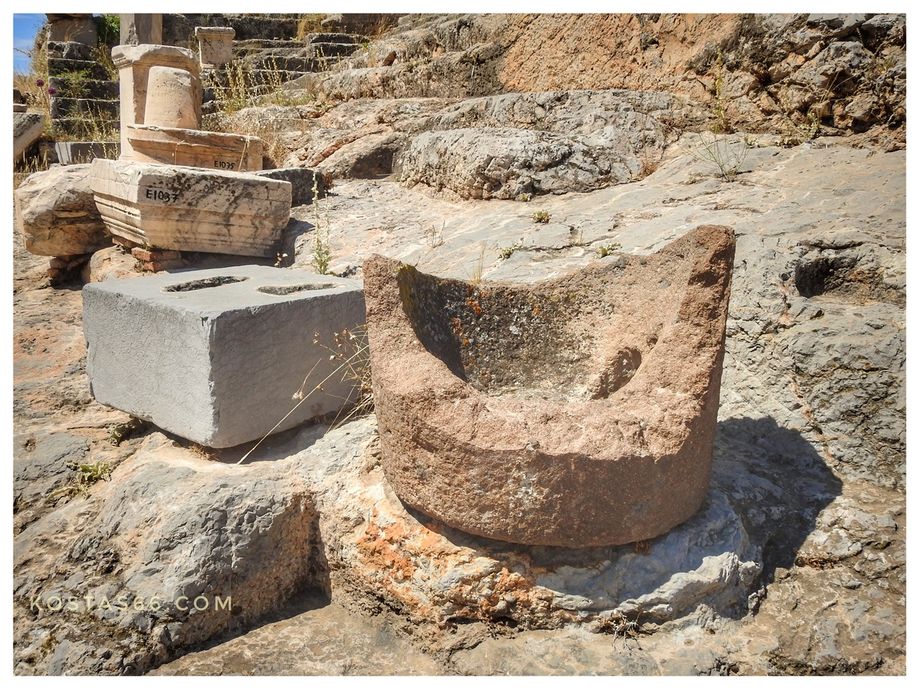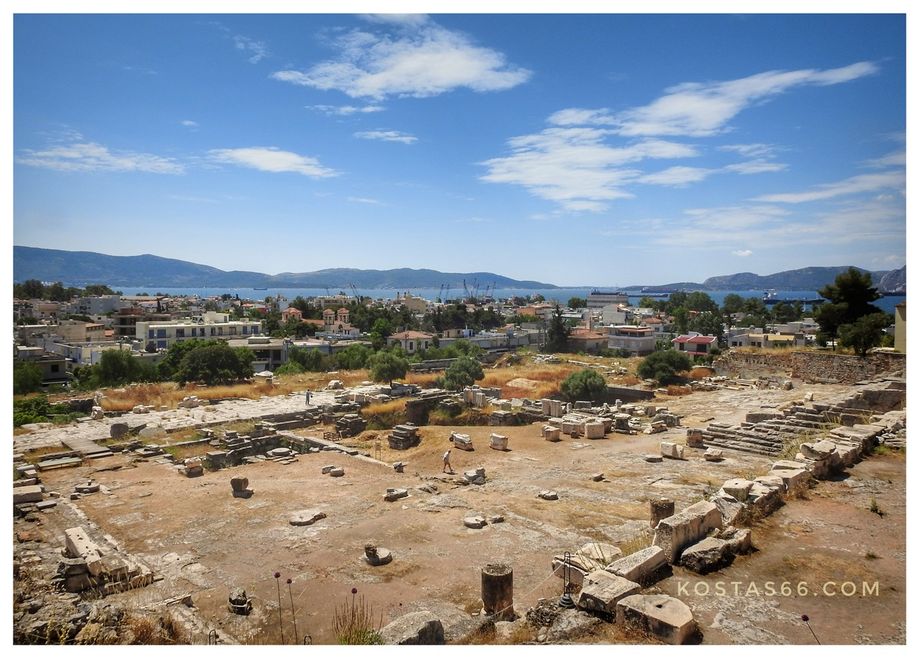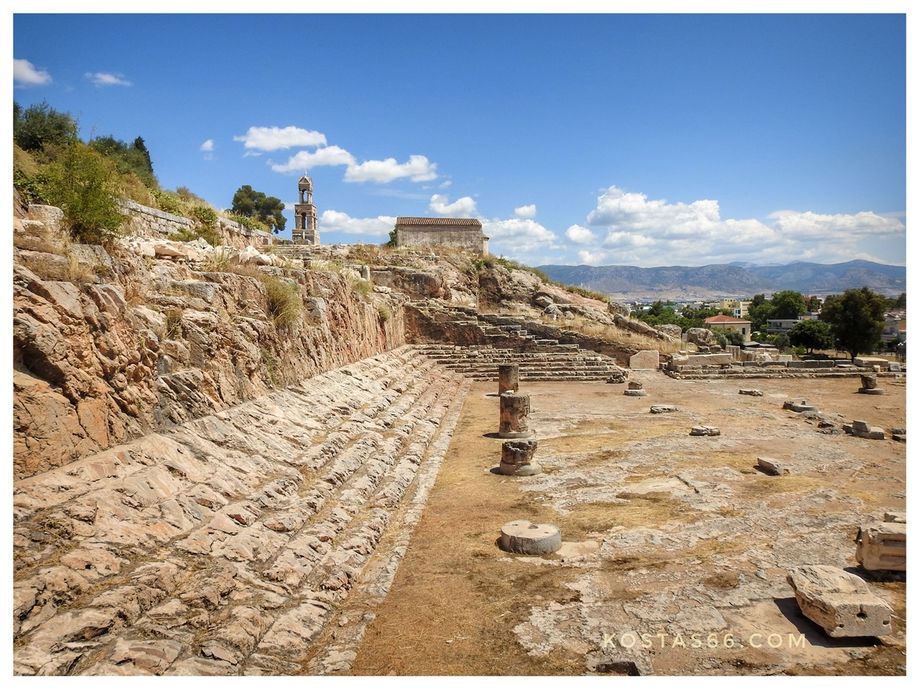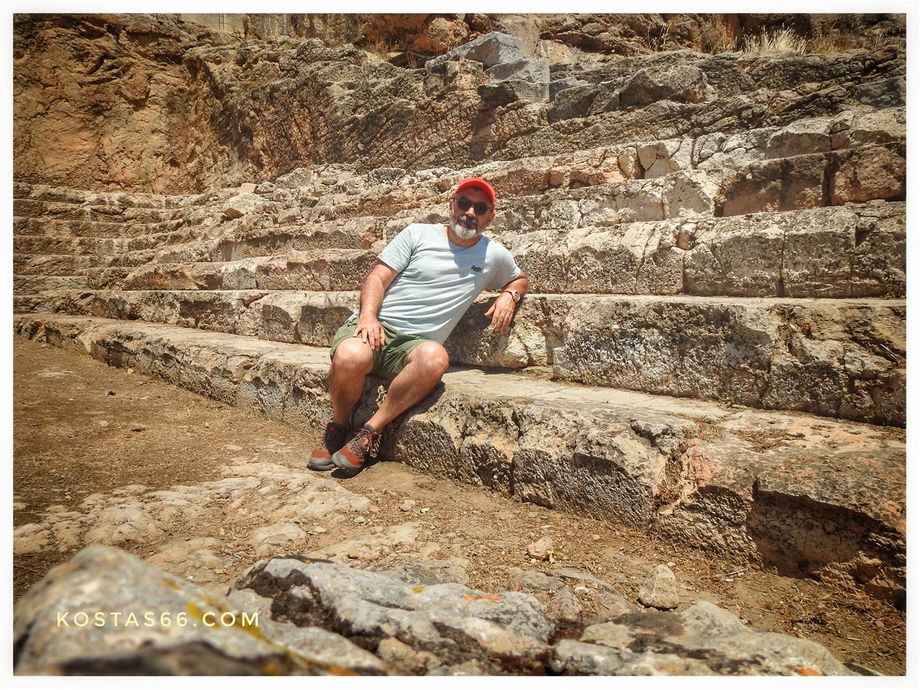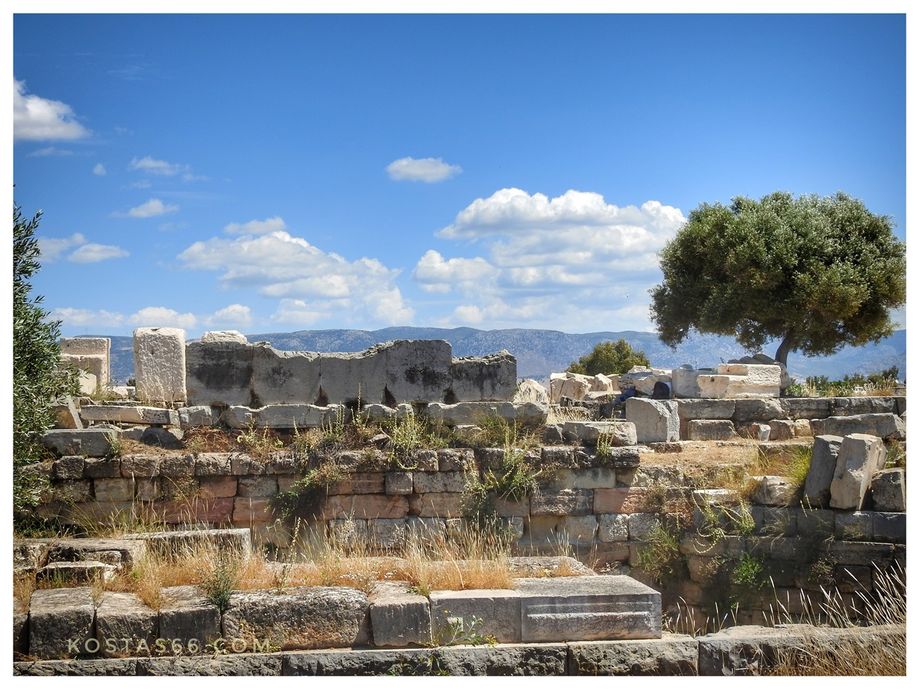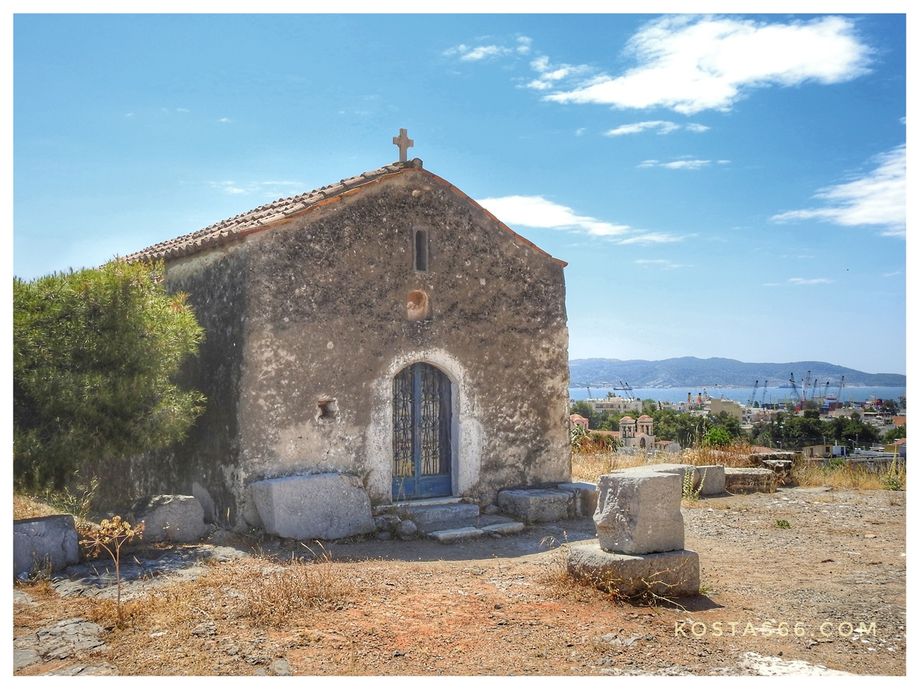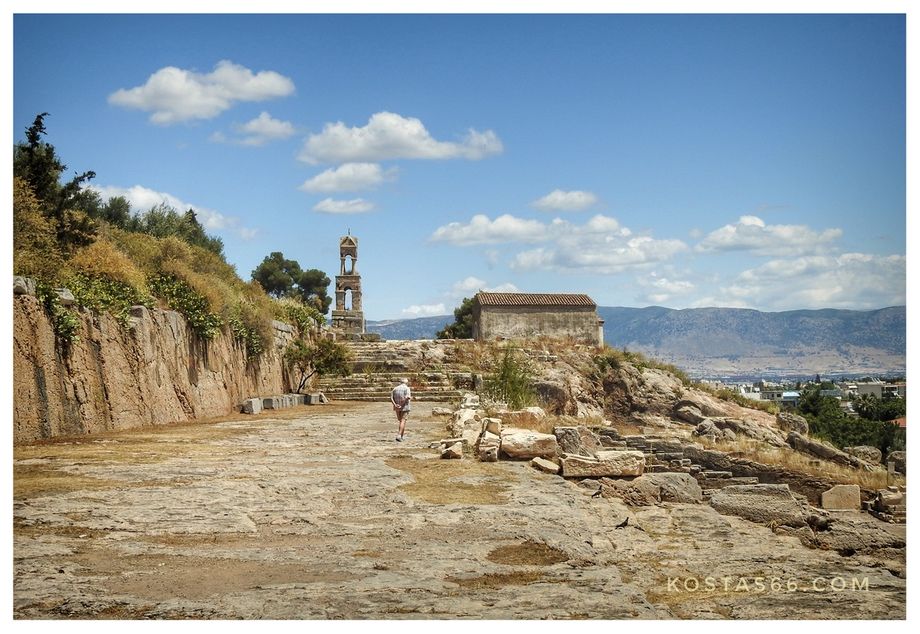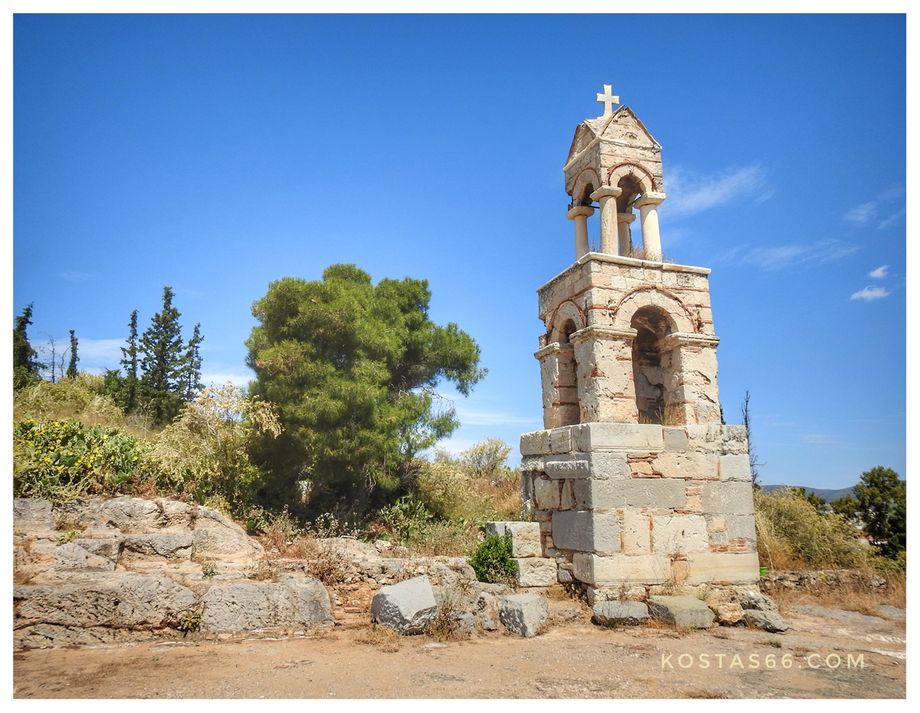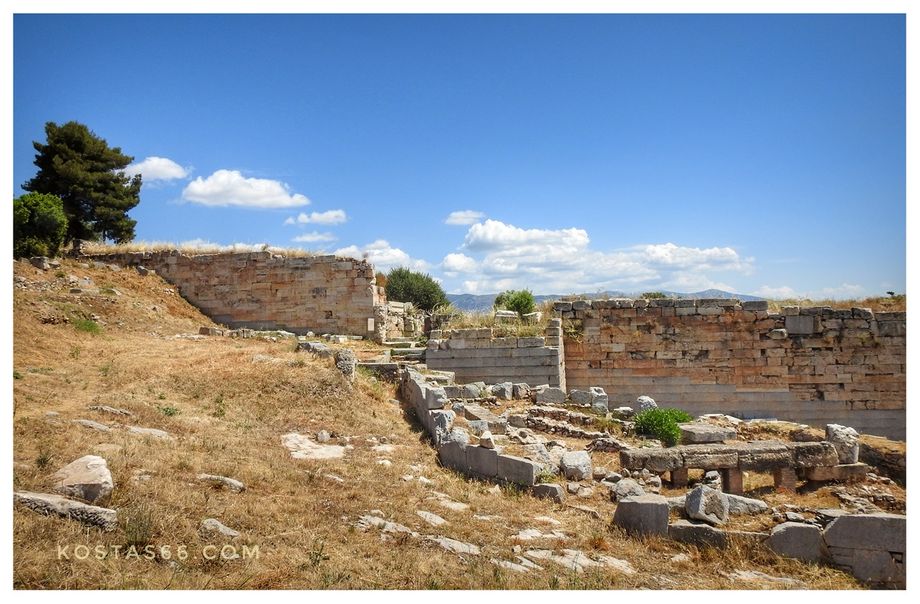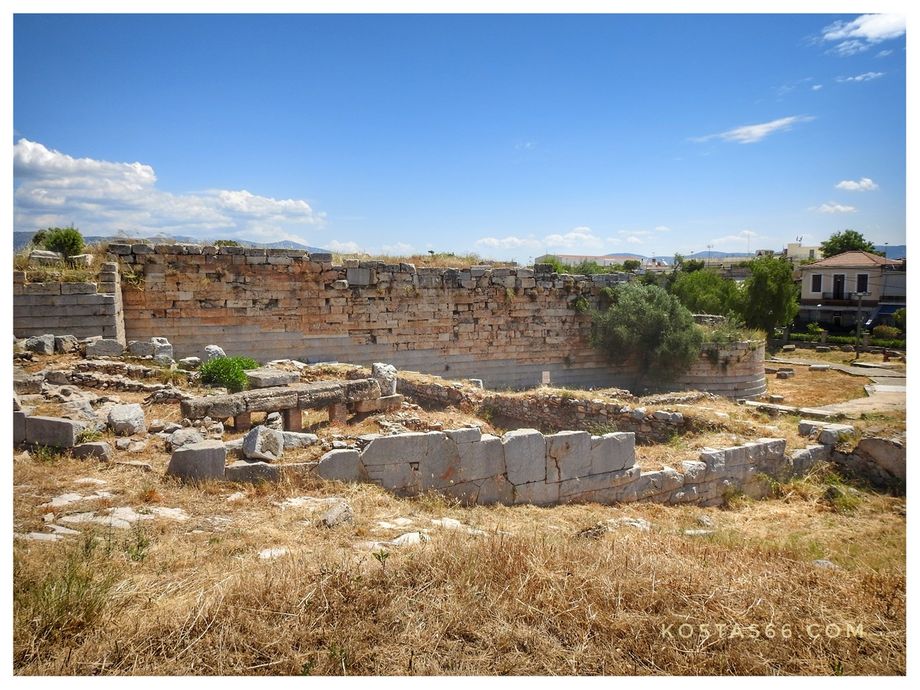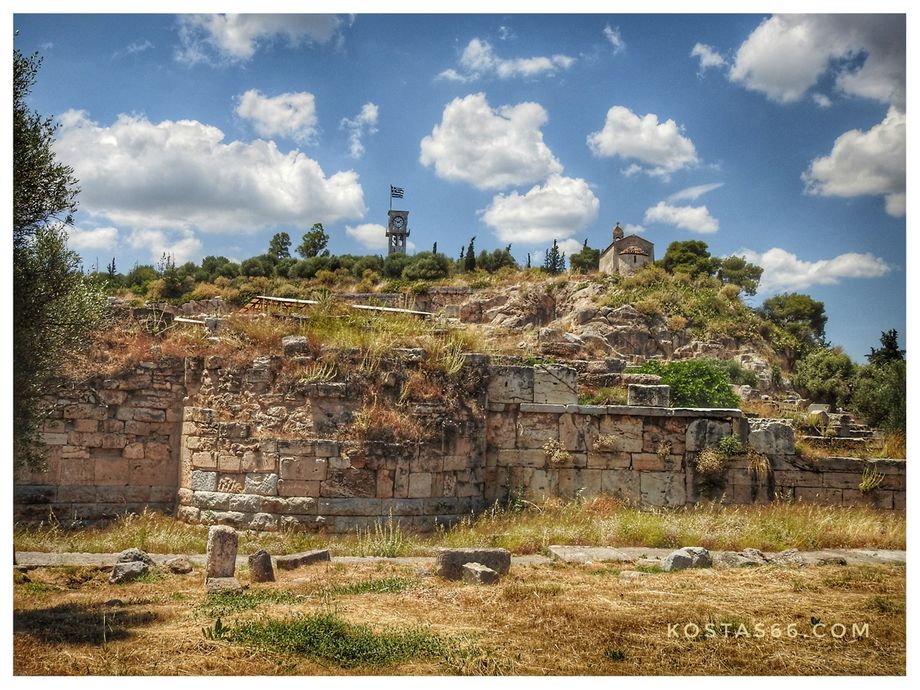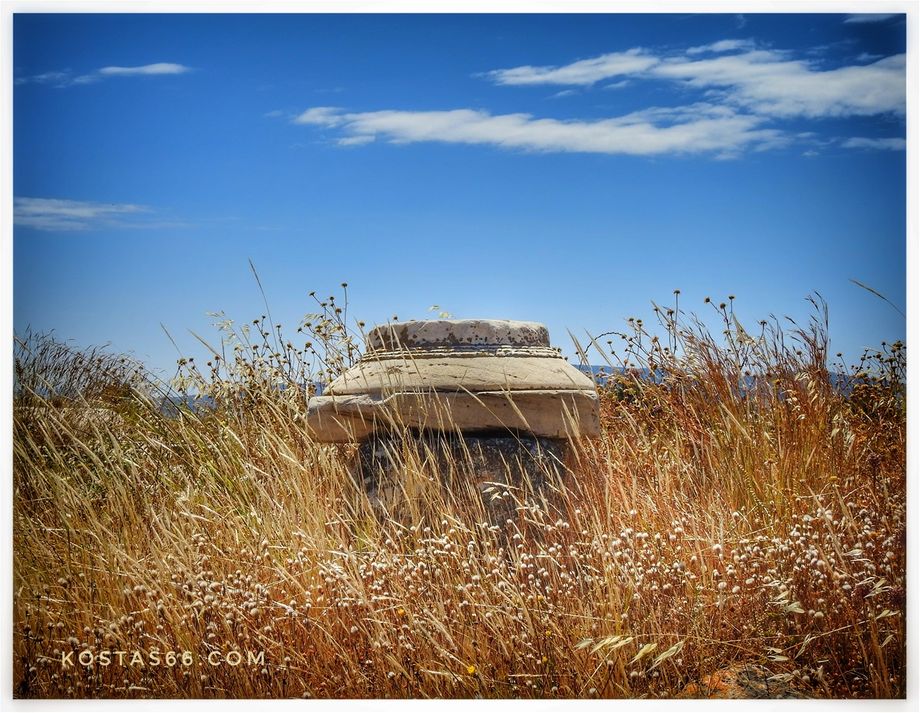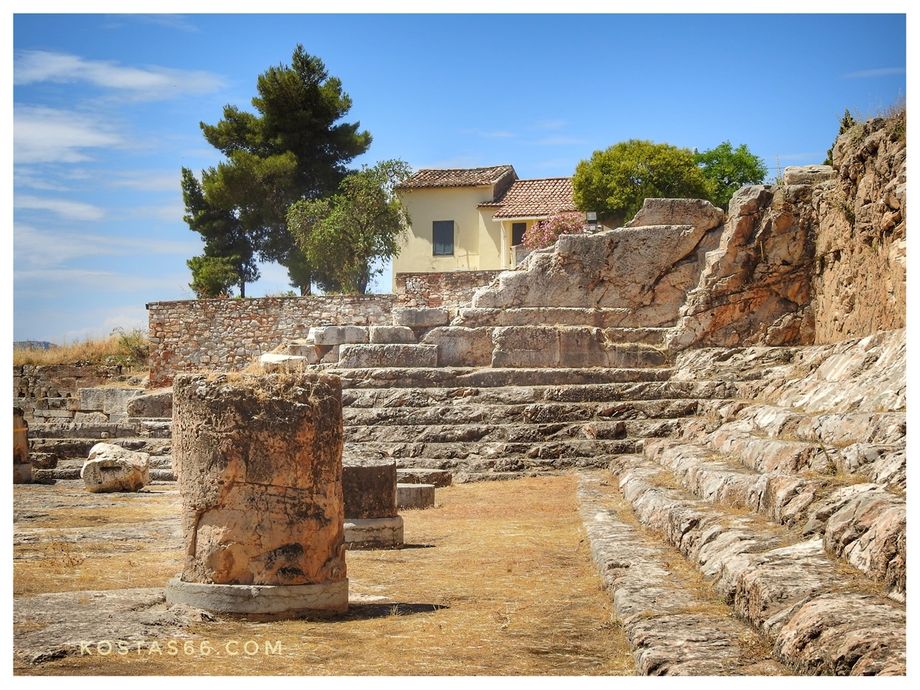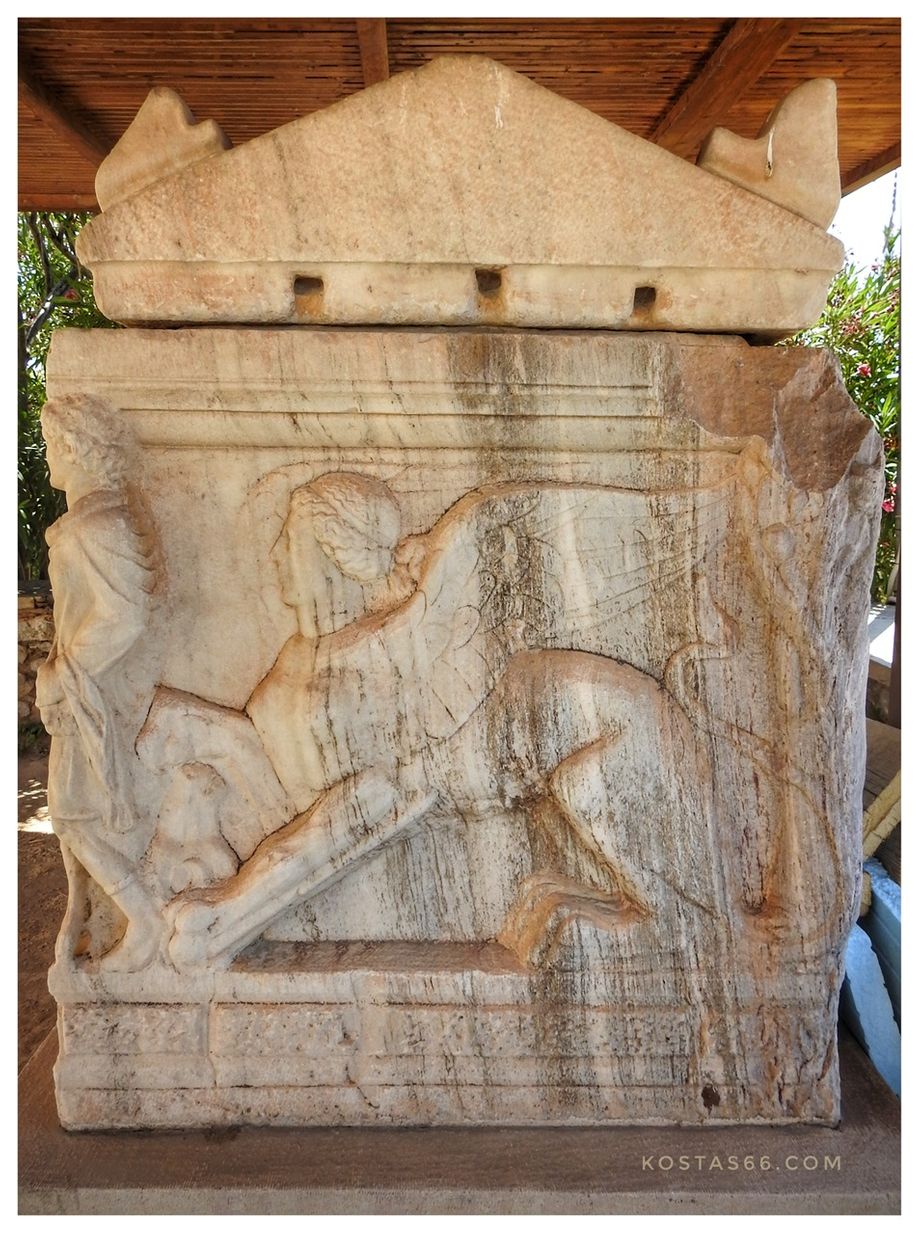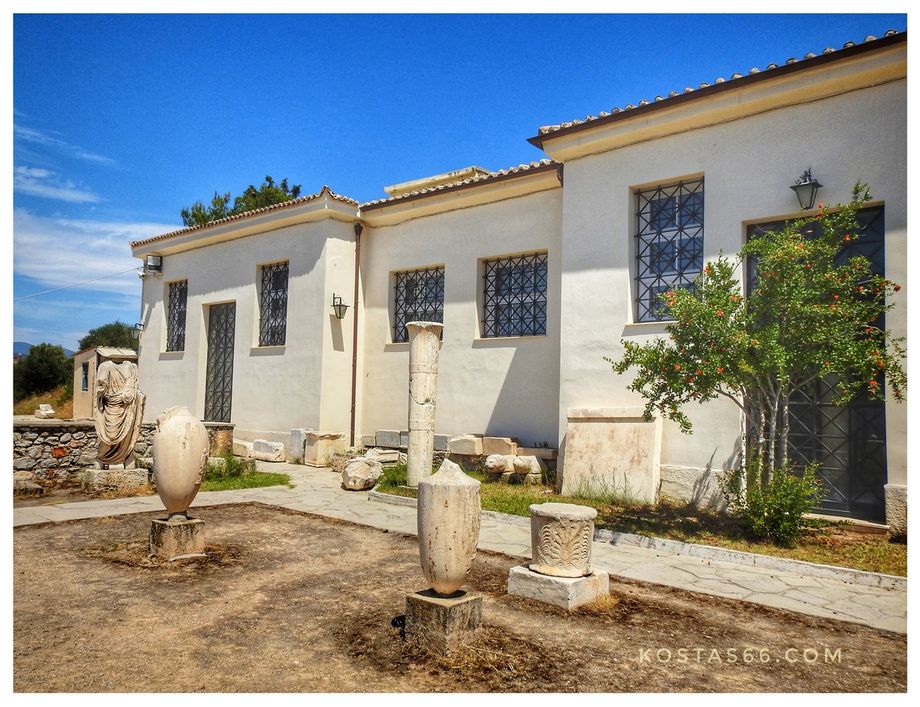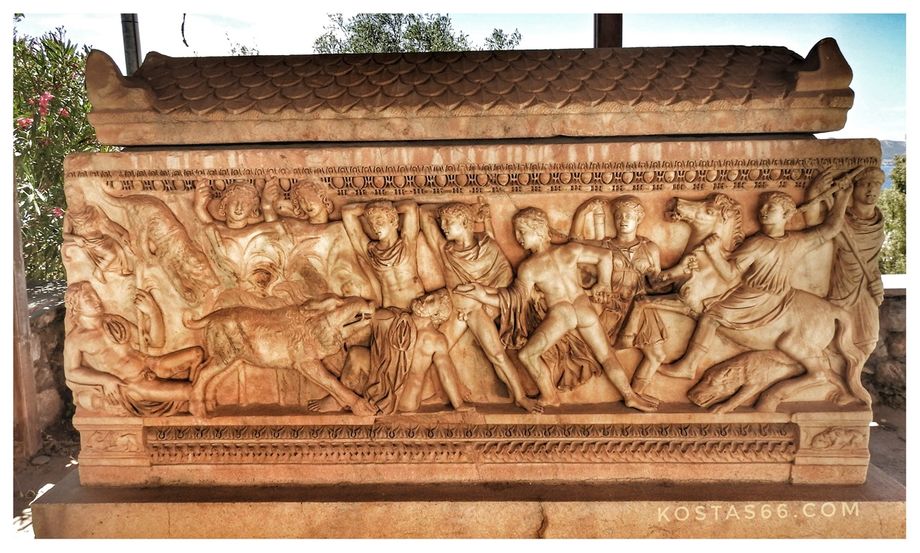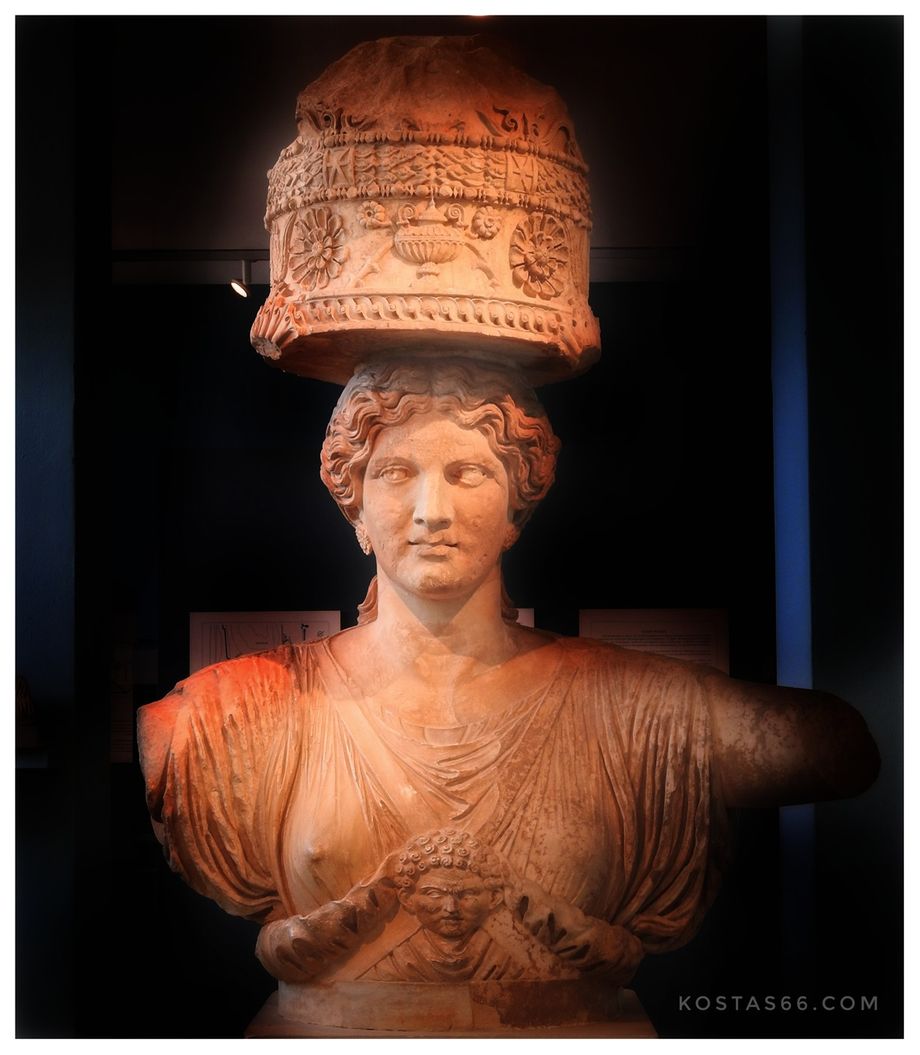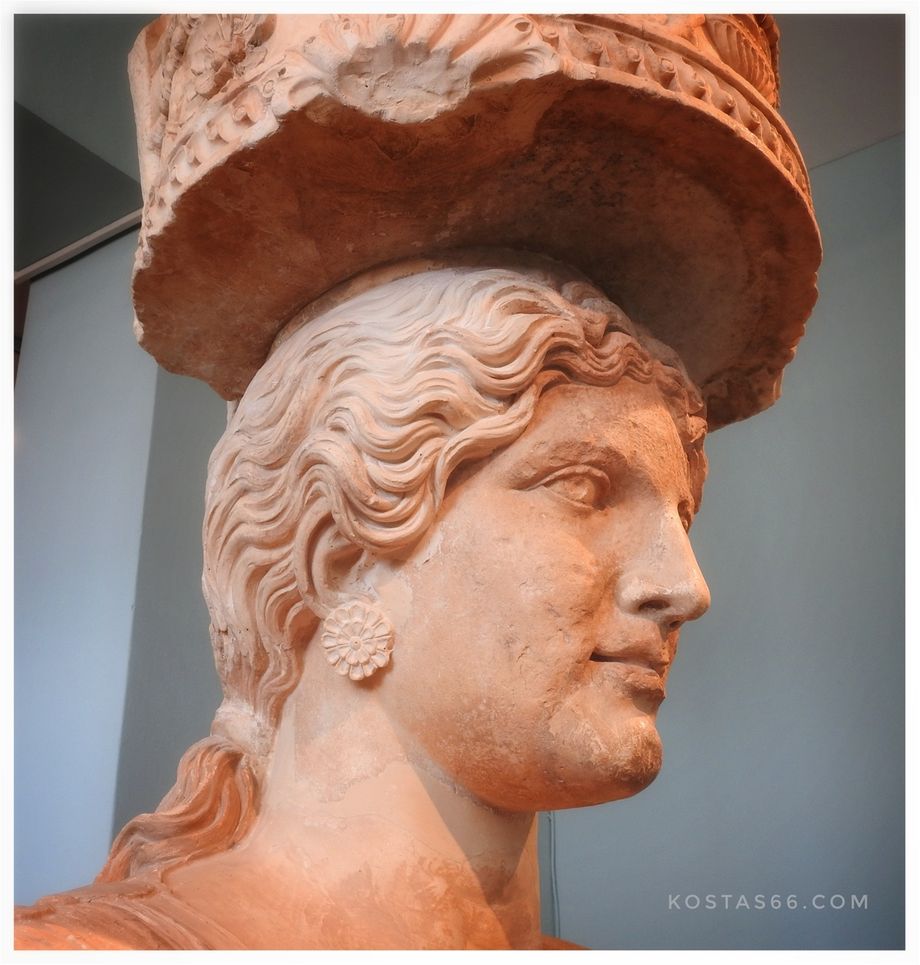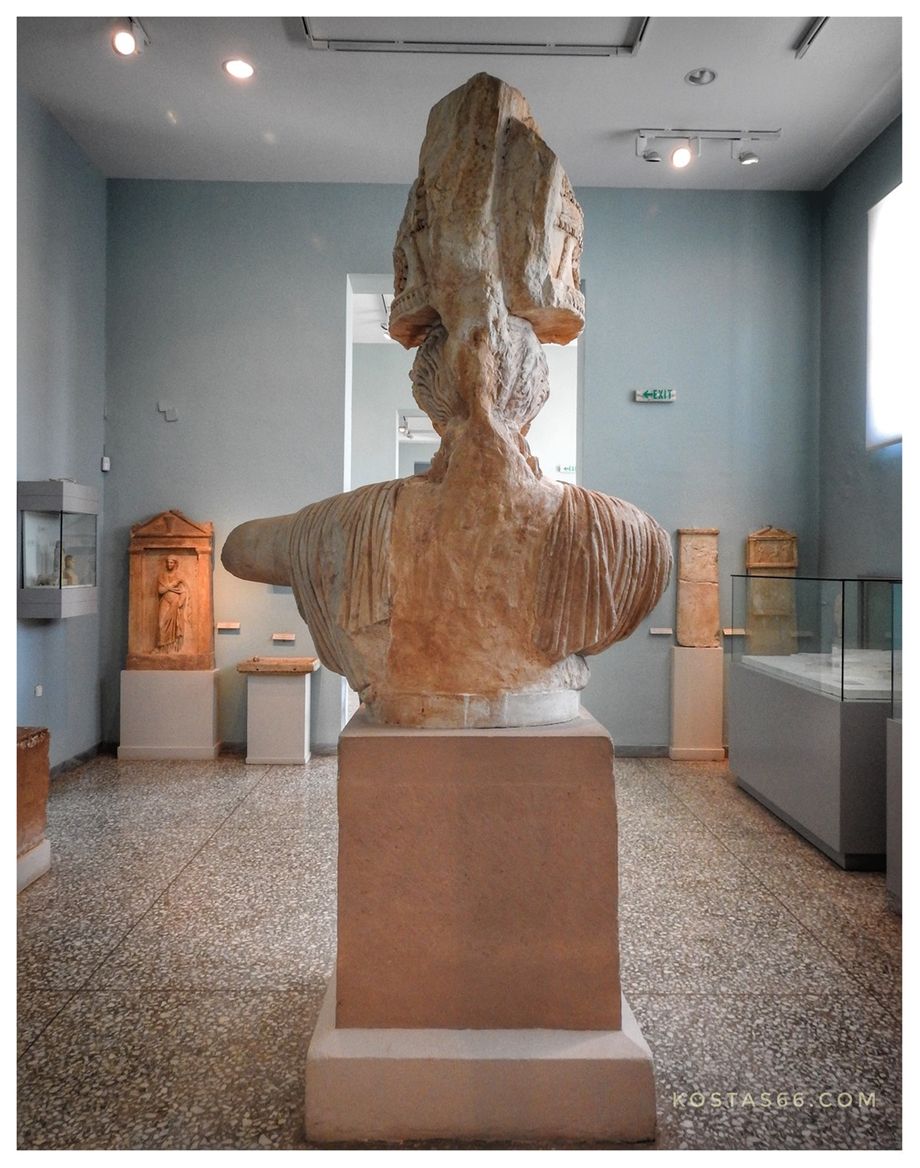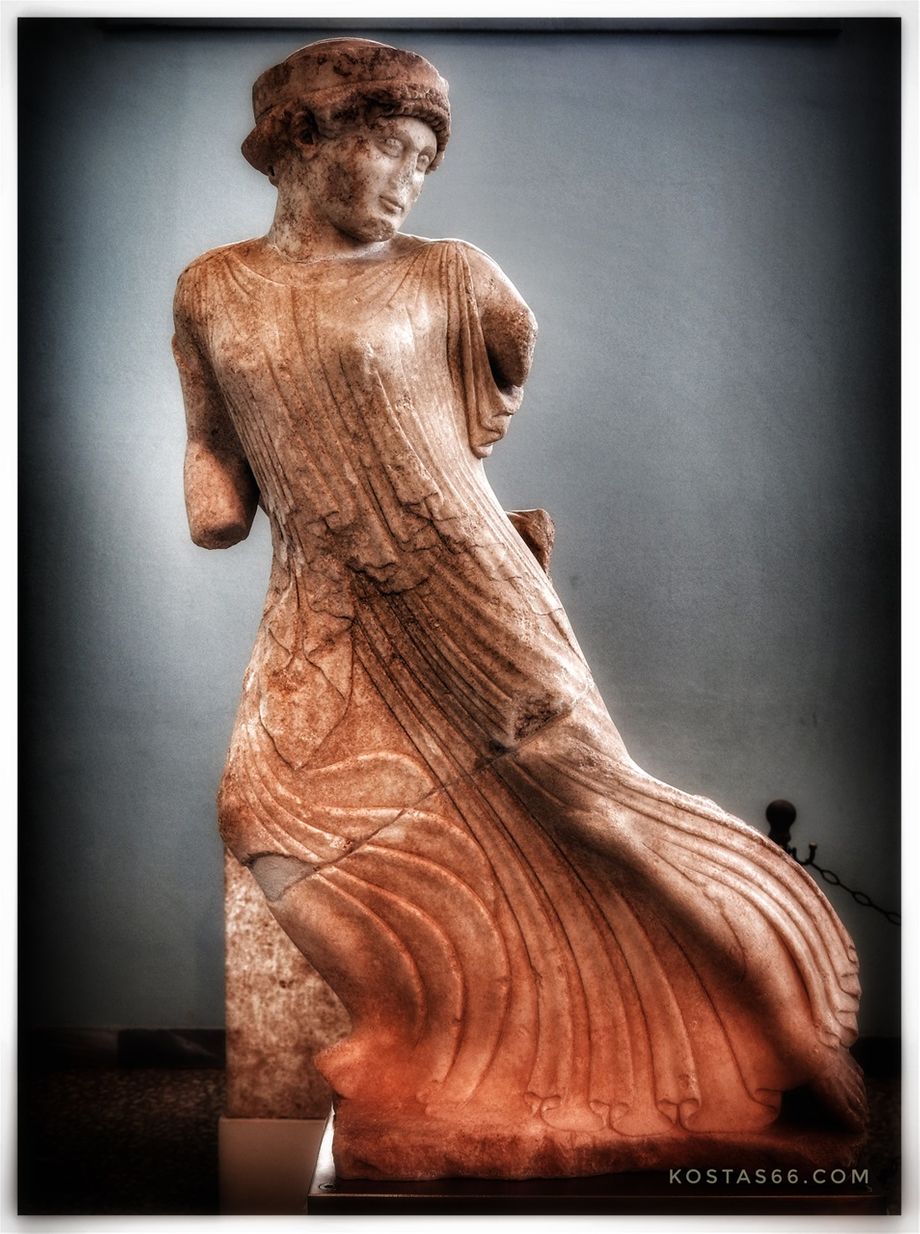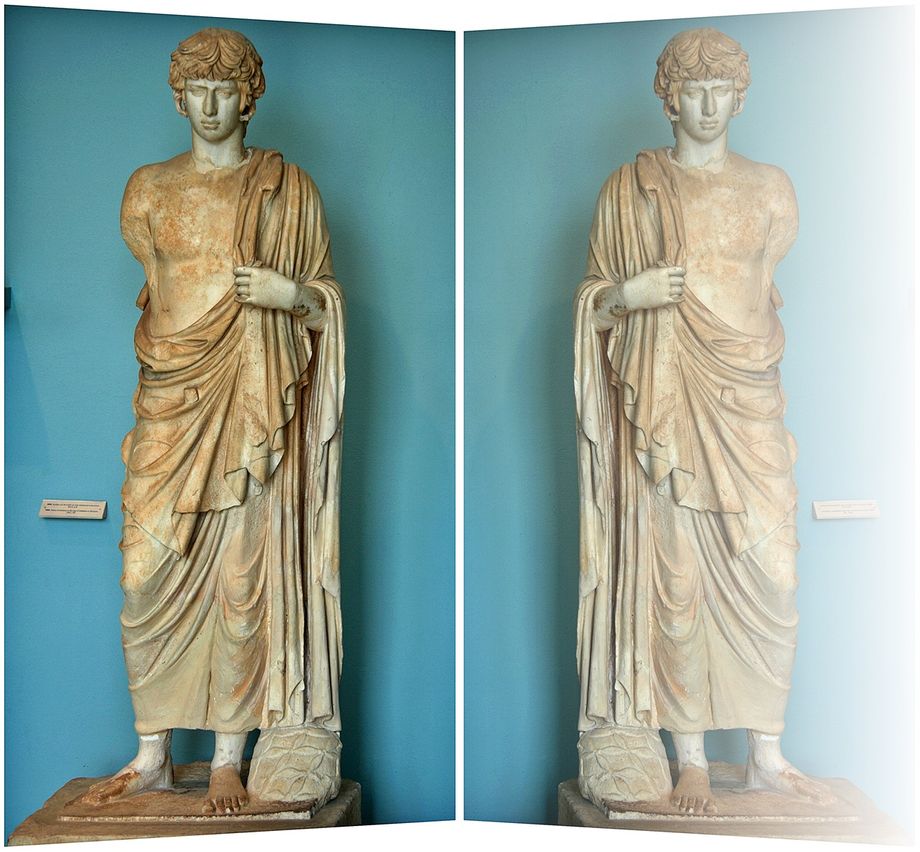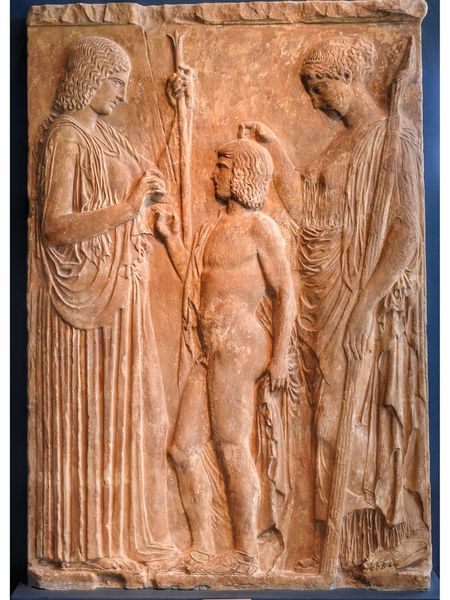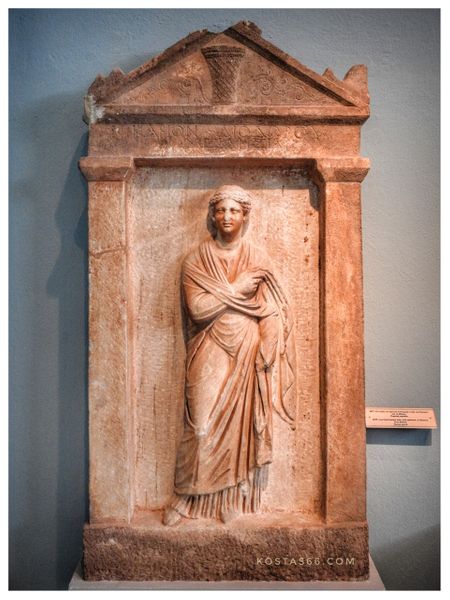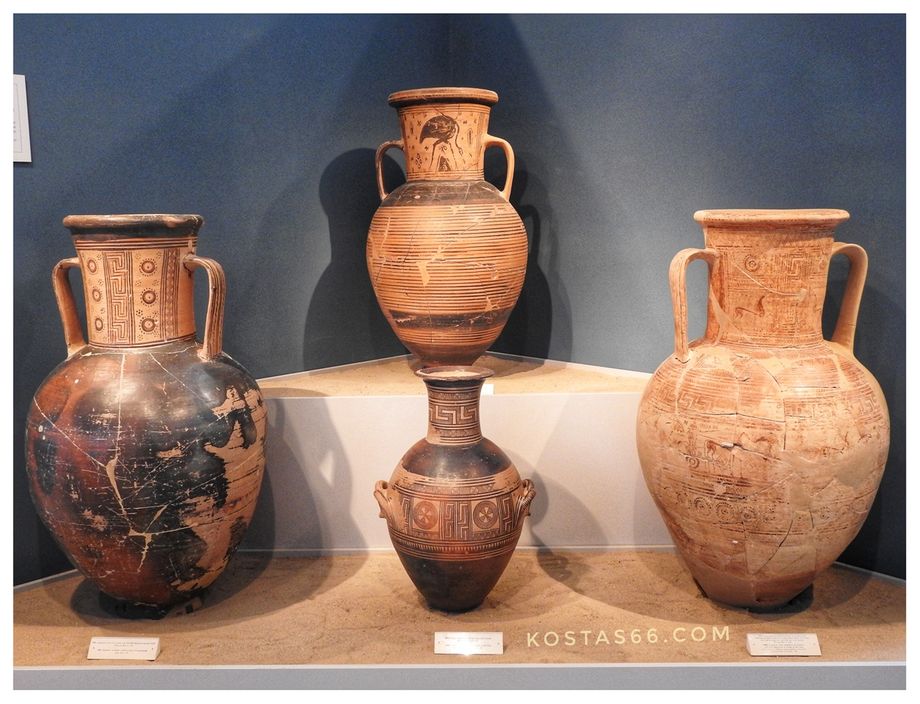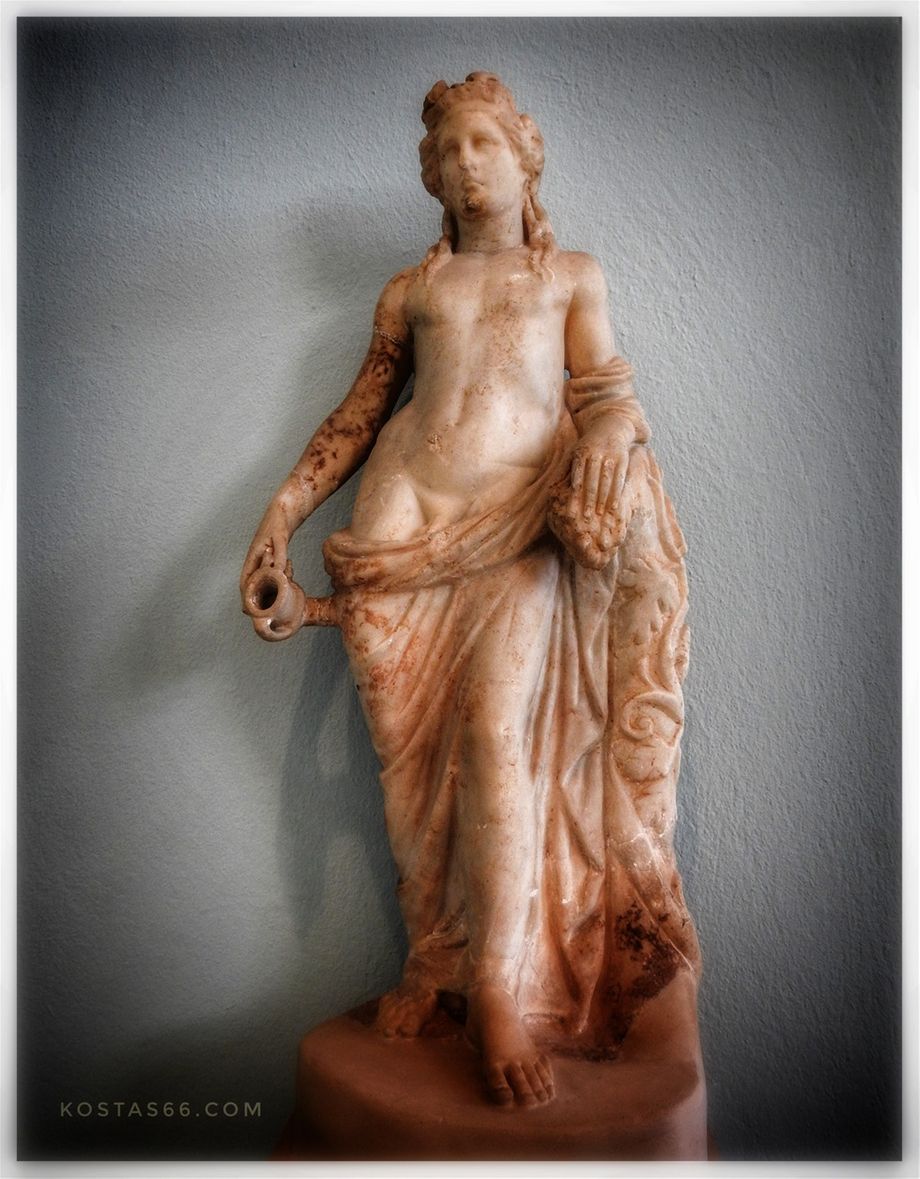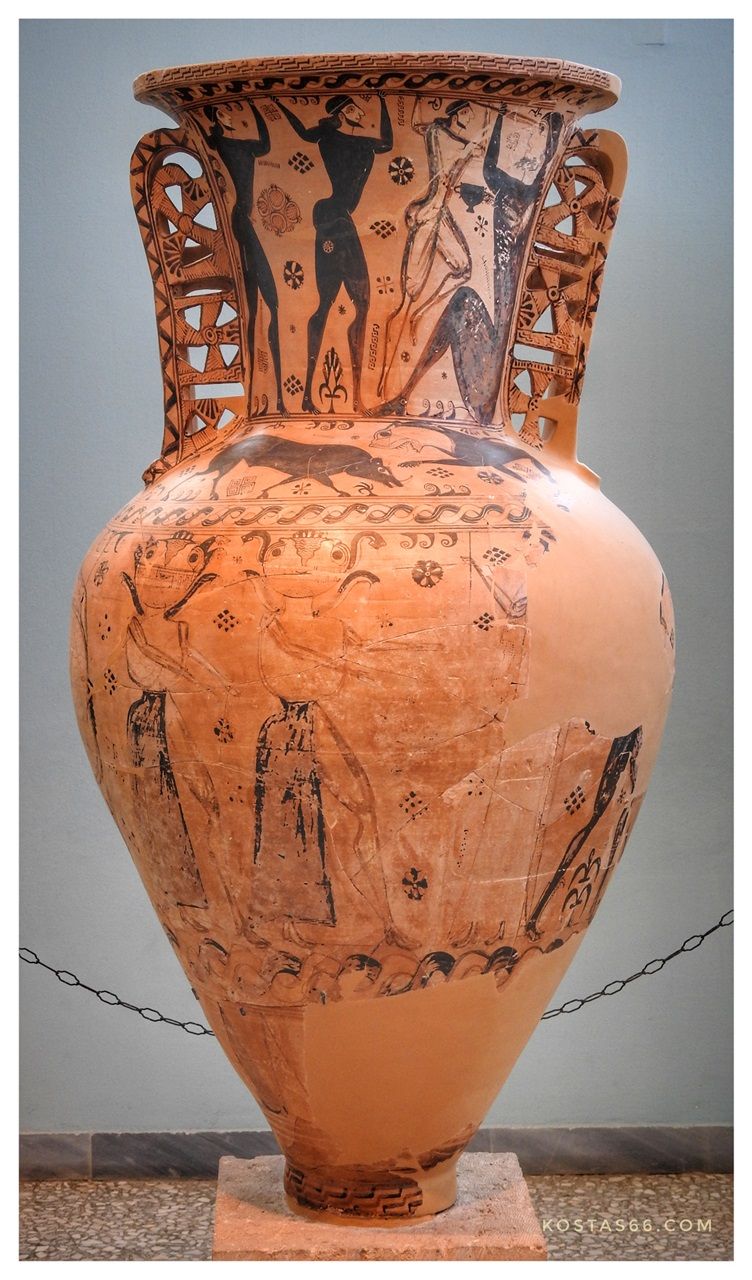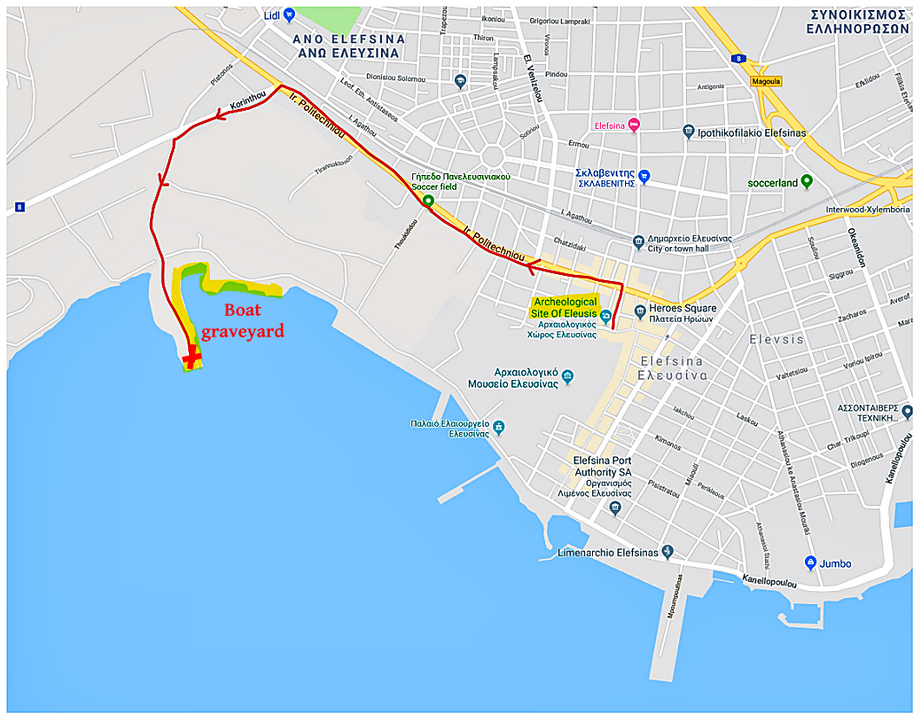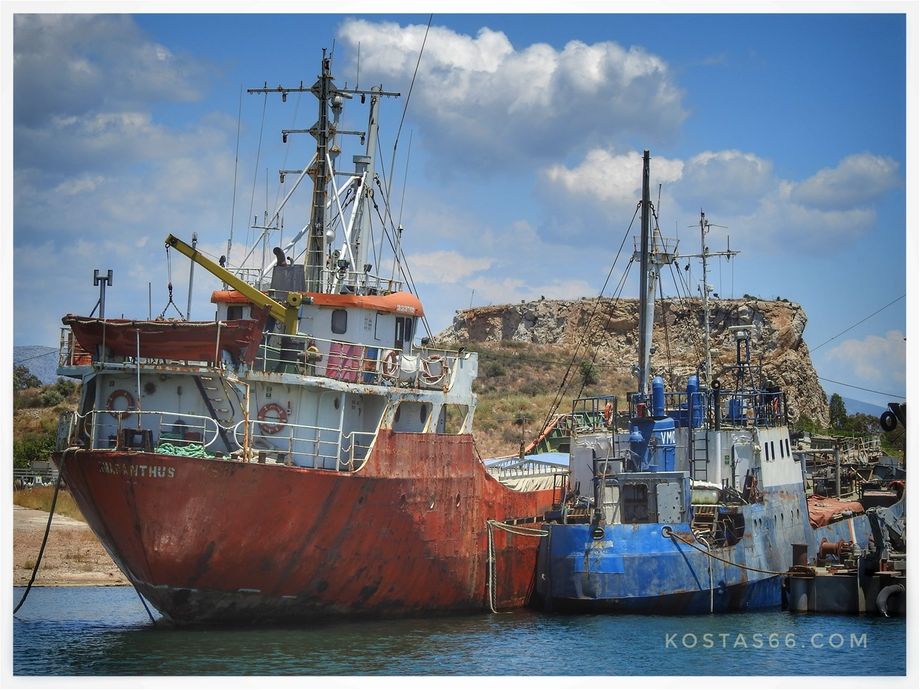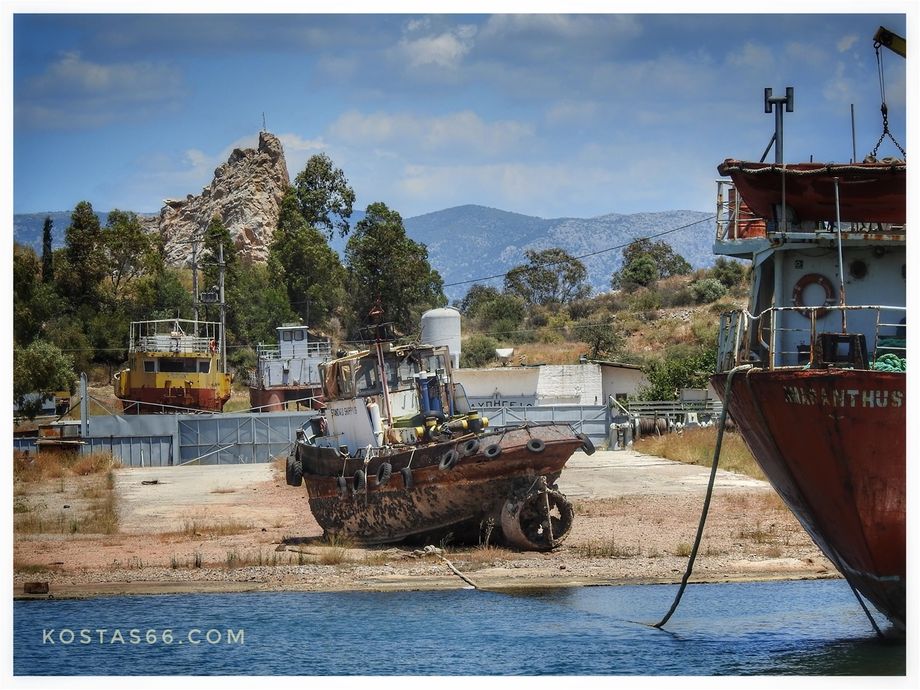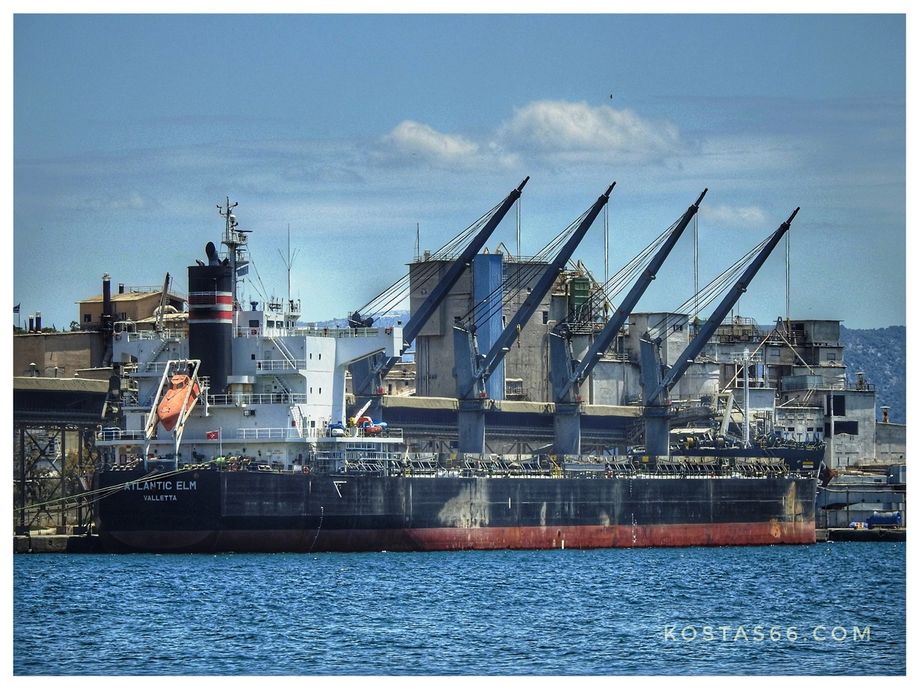JUNE 2019
ELEUSIS-Ελευσίνα
(archaeological site)
Eleusis (Ελευσίνα or Ἐλευσίς) is a town located about 20 kilometers northwest from the center of Athens. It lies in the Thriasian Plain, at the northernmost end of the Saronic Gulf. It appears to have derived its name from the supposed advent (ἔλευσις) of Goddess Demeter, though some trace its name from the hero Eleusis.
Getting there
The city is easily accessible by car (less than 30min drive) or public transportation. The easiest and fastest way is to take metro line M3 (blue line) to its terminal station “Agia Marina” and then bus no 845 or 876. Alternatively, take bus no A16 from its starting point at Koumoundourou Square (just some minutes walk from Omonia Square. All buses terminate in central Eleusis, and from there, one can walk for 2-3 minutes to the Archeological site.
The buses follow what used to be the most famous road in ancient Greece, the Iera Odos (Sacred Way). Iera odos, in ancient times, connected the Acropolis of Athens and the Eleusis Sanctuary.
Today, Eleusis is a rather unpleasant city as it is located in a greater industrial area dominated by tall factory chimneys and the nearby oil refineries. Nevertheless, here lies one of Greece's most important archeological sites, especially because of its sentimentally overwhelming history. Eleusis owed its celebrity to its being the chief seat of the worship of Goddess Demeter (Δήμητρα-Goddess of the harvest, agriculture, fertility, and sacred law) and her daughter Persephone-Περσεφόνη (aka Kore) and to the mysteries celebrated in honor of them, which were called the Eleusinian Mysteries. They continued to be regarded as the most sacred of all the Grecian mysteries down to the fall of paganism.
"Ο εφιάλτης της Περσεφόνης" (the nightmare of Persephone)
Εκεί που φύτρωνε φλισκούνι κι άγρια μέντα/ κι έβγαζε η γη το πρώτο της κυκλάμινο/ τώρα χωριάτες παζαρεύουν τα τσιμέντα/ και τα πουλιά πέφτουν νεκρά στην υψικάμινο.
Κοιμήσου Περσεφόνη στην αγκαλιά της γης/ στου κόσμου το μπαλκόνι ποτέ μην ξαναβγείς.
Εκεί που σμίγανε τα χέρια τους οι μύστες/ ευλαβικά πριν μπουν στο θυσιαστήριο/ τώρα πετάνε αποτσίγαρα οι τουρίστες/ και το καινούργιο πάν να δουν διυλιστήριο.
Κοιμήσου Περσεφόνη στην αγκαλιά της γης/ στου κόσμου το μπαλκόνι ποτέ μην ξαναβγείς.
Εκεί που η θάλασσα γινόταν ευλογία/ κι ήταν ευχή του κάμπου τα βελάσματα/ τώρα καμιόνια κουβαλάν στα ναυπηγεία/ άδεια κορμιά σιδερικά παιδιά κι ελάσματα.
Κοιμήσου Περσεφόνη στην αγκαλιά της γης/ στου κόσμου το μπαλκόνι ποτέ μην ξαναβγείς.
Where the pennyroyal and wild mint was grown/ and the earth was sprouting her first cyclamen/ now villagers bargain cements/ and birds fall down dead in the furnace.
Sleep Persephone in earth's arms/ and never come out at world's balcony.
Where the initiators were shaking hands/ reverently before they enter the sanctuary/ now tourists throw their cigarettes/ and they go to see the new refinery.
Sleep Persephone in earth's arms/ and never come out at world's balcony.
Where the sea was becoming blessing/ and the moanings were joy in the fields/ now rails carry at the shipyards/ empty bodies scrap metal children and lamina.
Sleep Persephone in earth's arms/ and never come out at world's balcony.
The Eleusinian Mysteries
The Eleusinian Mysteries (Ελευσίνια Μυστήρια) were initiations held every year for the cult of Demeter and Persephone. Eleusinian Mysteries became popular in the Greek-speaking world as early as 600 BC and attracted initiates during Roman Empire before declining as Christianity gained popularity in the 4th and 5th centuries. The last pagan emperor of Rome, Julian, who reigned from 361 to 363 after about fifty years of Christian rule, attempted to restore the Eleusinian Mysteries and was the last emperor to be initiated into them. The Roman emperor Theodosius I closed the sanctuaries by decree during the Persecution of pagans in the late Roman Empire about 30 years later, in 392 AD. Despite the destruction of the Eleusinian Mysteries, elements of the cult survived in the Greek countryside. Peasants and shepherds partially transferred Demeter's rites and religious duties onto Christian saints, who gradually became the local patrons of agriculture and "heir" to the pagan mother goddess.
The Eleusinian Mysteries are the "most famous of the secret religious rites of ancient Greece." Their basis was an old agrarian cult and represented the myth of the abduction of Persephone from her mother Demeter by the king of the underworld Hades (Άδης), in a cycle with three phases: the descent (loss), the search, and the ascent, with the main theme being the ascent (άνοδος) of Persephone and the reunion with her mother.
The rites, ceremonies, and beliefs were kept secret and consistently preserved from antiquity. So, today, we actually know almost nothing of what was going on during those ceremonies. For the initiated, the rebirth of Persephone symbolized the eternity of life, which flows from generation to generation, and they believed that they would have a reward in the afterlife. Since the Mysteries involved visions and conjuring of an afterlife, some scholars believe that the power and longevity of the Eleusinian Mysteries, a consistent set of rites, ceremonies, and experiences that spanned two millennia, came from psychedelic drugs.
The return of Persephone, oil painting by Frederic Leighton (1891).
Demeter and Eleusis
According to the myth, while Demeter searched for her daughter Persephone, having taken the form of an older woman called Doso, she received a hospitable welcome from Keleus, the King of Eleusis. Keleos’ daughters found crying Doso sitting on a rock by an old well (the Kallichoron Well). Keleus asked her to nurse Demophon, his son by Metaneira. As a gift to Keleus, because of his hospitality, Demeter planned to make Demophon a god by anointing and coating him with ambrosia, breathing gently upon him while holding him in her arms and bosom, and making him immortal by burning his mortal spirit away in the family hearth every night. She put him in the fire at night like a firebrand or ember without his parents' knowledge. Demeter was unable to complete the ritual because Demophon's mother, Metaneira, walked in and saw her son in the fire and screamed in fright, which angered Demeter, who lamented that foolish mortals do not understand the concept and ritual. In all her glory, Demeter cast off her disguise and instructed Meteneira and Keleos to build a rich shrine to Demeter. So, it was done!
In Greek mythology, Agelasta (Αγέλαστη, "smile-less") was the name of the stone on which Demeter rested during her search for Persephone. In modern culture, Agelasta inspired the title of a documentary by Philippos Koutsaftis (Φίλιππος Κουτσαφτής), called «Agelastos Petra - Αγέλαστος Πέτρα - Smile-less Stone" (2000) on Modern Eleusis.
Αγέλαστος Πέτρα - Agelastos Petra - Mourning Rock (official trailer).
The Telesterion
The temple of Demeter, the Eleusinians built, best known as Telesterion (τελεστήριον or μυστικὸς σηκός), was the largest in all Greece, and is described by Strabo as capable of containing as many persons as a theatre. The original plan of the building was designed by Ictinus, the architect of the Parthenon at Athens; but it was many years before it was completed. Its portico of 12 columns was not built until Demetrius Phalereus, about 318 BC, by the architect Philo. When finished, the temple was considered one of the four finest examples of Grecian architecture in marble. It faced the southeast. In 170 AD, the Temple was sacked by the Sarmatians but was rebuilt by Marcus Aurelius. Aurelius was then allowed to become the only layperson ever to enter the "Megaron" (anaktoron), the central and most sacred part of the Telesterion.
A. The Archaeological site.
By entering the archaeological site, on your left, you see the ticket booth. Please keep your ticket handy (6 euros), because it has to be shown again at the entrance of the Archeological museum, which is located inside the site.
Opening hours 08.30 - 16.00, daily except on Tuesdays.
The archaelogical site on the map. The red path shows the last part of the Sacred Way. 1-Entrance & ticket booth, 2-Roman Court, 3-northwestern Stoa, 4-Eschara, 5- Temple of Artemis Propylaea, 6-West Triumphal Arch, 7-bust of Marcus Aurelius, 8- East Triumphal Arch, 9-Kallichoron Well, 10-Greater Propylaea, 11-Lesser Propylaea, 12-5th BC century wall, 13-Telesterion (included in the green square), 14-portico of Philo, 15-Megaron, 16-Rock Terrace, 17-Panagitsa chapel and belfry, 18-South Gate, 19-Gymnasium, 20-4th BC century fortification wall, 21-Archaelogical museum.
Τhe Roman court of the archealogical site seen from ticket booth (the entrance). At the background we see the Greater (big) Propylaea, probably built by Marcus Aurelius, and at the back the Acropolis with the Panagitsa chapel, Clock and Bell tower on it.
You are now at the Roman Court (Sacred Court), the gathering place of the pilgrims which marked the end of the Sacred Way. Here the visitor can see the Eschara (grid), a structure with an altar for the offerings to the goddesses; the Doric Temple of Artemis Propylaea (dated to the 2nd century AD); the northwestern Stoa (actually only a fallen pillar has been left of it), where pilgrims could rest and spend the night; two partly reconstructed Triumphal Arches (Roman reproductions of Hadrian's Arch in Athens, built after A.D. 129); and the Kallichoron Well (holy well), where, according to the myth, rested Demeter, when she first came to Eleusis. Around this well, the Eleusinian women performed dances during the ceremony in honor of the goddess (dated to the first half of the 5th century BC).
The Eschára where the sacrifices were made. Temple of Artemis Propylaea (at the background).
The Temple of Artemis.
A fallen pillar (part of the northwest stoa) and behind it the Eschára where the sacrifices were made.
The Roman Court seen from the west towards the east. On the left stand parts of the western Triumphal Arch and on the right the cuirassed bust of Marcus Aurelius.
Cuirassed bust of Marcus Aurelius, which was standing at the top of the Greater Propylaea.
Remains from the Western Triumphal arch.
Remains of the East Triumphal arch (on the left of the Kallichoron Well).
Kallichoron Well (holy well) located just before (on the left) entering the Greater Propylaea.
At the south side of the Court, steps lead to the Greater Propylaea, a Doric propylon, a close copy of the central section of the Propylaea on the Athenian Acropolis, which were designed by Mnesikles (dated to the second half of the 2nd century AD). After this, the visitor goes through the Lesser Propylaea, internal Ionic propylon, dedicated to the goddess by Appius Claudius Pulcher in 54 BC. On the west of the Lesser Propylaea stands the Plutoneion (dated between the second half of the 6th and the 4th century BC), a sacred retaining wall around a cave where, according to tradition, Pluto, the god of the Underworld, appeared. A representation of the annual return of Persephone on earth took place here.
Greater Propylaea.
Greater Propylaea.
Nerium (oleander) flowers growing at Greater Propylaea.
The Lesser (small) Propylaea.
Detail showing wheat, symbol of Demeter (Lesser Propylaea). This picture of mine used in the cover of John Lamb Lash's book: 'Not in His Image' (15th Anniversary Edition). With clarity, author John Lamb Lash explains how a little-known messianic sect propelled itself into a dominant world power, systematically wiping out the great Gnostic spiritual teachers, the Druid priests, and the shamanistic healers of Europe and North Africa. Early Christians burned libraries and destroyed temples in an attempt to silence the ancient truth-tellers and keep their own secrets. Not in His Image delves deeply into ancient Gnostic writings to reconstruct the story early Christians tried to scrub from the pages of history, exploring the richness of the ancient European Pagan spirituality—the Pagan Mysteries, the Great Goddess, Gnosis, the myths of Sophia and Gaia. In the 15th Anniversary Edition, Lash doubles down on his original argument against redemptive ideology and authoritarian deceit. He shows how the Gnostics clearly foresaw the current program of salvation by syringe, and places the Sophianic vision of life centrally in the battle to expose and oppose the evil agenda of transhumanism, making this well-timed update more relevant than ever.
Lesser Prpylaea (foreground). Ploutonio caves (background).
The Ploutonion caves (Temple of Plouto).
The Ploutonion (Temple of Plouto).
After this, a short path (*) leads to the Telesterion (dated from the 5th century BC until the 2nd century AD), the large square hall with six entrances, two on each of the three sides, and eight tiers of seats along all of the four sides, where the initiates sat (only their foundations are preserved today). The center of the hall was occupied by the "megaron", the adyton of the Eleusinian cult, where only the hierophantes (the high priest) was allowed to enter to perform the mystery rites. Several architectural phases are distinguished in the building.
(*) Actually, this path is the last part of the Sacred Way, which starts from Athens and ends here at the NW entrance of the Telesterion.
Overall view of the eastern part of the Telesterion from the Rock Terrace. The paved corridor seen on the left is the portico of Philo added later to the Telesterion. The modern city of Eleusis can be seen at the background.
The Telesterion in the foreground and the Panagitsa chapel & Bell Tower on the hill.
Me at the Telesterion.
The south limits of the Telesterion.
The Telesterion is partly carved on the rocky hill above (the Acropolis). Long steps on both sides of the Telesterion lead to the Rock Terrace, on the left of which stands the Archeological Museum and, on the right, more curved on the rock steps take you to the Panagitsa chapel (church of the Presentation of Virgin Mary). Unfortunately, the church is only open during festive days or public ceremonies. Just opposite the chapel stands the old belfry and further away from the newer bell/clock tower. From up here, one has a good view of the archaeological site, the modern city of Eleusis, and the sea beyond.
The Panagitsa chapel.
The Rock Terrace. Panagitsa chapel and the bell tower on the Acropolis.
The old bell tower on the acropolis.
Leave the Telesterion behind and continue to the south on a path that takes you through the South Gate outside the fortification walls. Here stands the Gymnasium and other buildings. The walls we see here are a 4th century BC addition.
Go back inside the walls and take the stairs on the south side of the Telesterion, which lead to the Archeological Museum.
The South Gate and the south addition to the fortification walls.
SouthEast fortification wall (4th century BC) and the Gymnasium (at the foreground).
Eastern fortification wall (5th century BC).
B. The Museum
The Archeological Museum of Eleusis is a small building located inside the archaeological site. Its entrance is by the south part of the Rock Terrace. Built in 1890, by the plans of the German architect Kaverau, to keep the findings of the local excavations, and after two years (1892) was extended under the plans of the Greek architect J. Mousis. The exhibits are arranged into the courtyard and 6 small rooms, all on one level.
At the entrance you have to show the ticket bought at the archaeological site entrance - so, keep it safe.
The archeaological museum building seen from the Telesterion.
Marble sarcophagus with a relief of a Sphinx on its side face (2nd century AD), in the courtyard of the Archaeological Museum of Eleusis.
The courtyard of the museum is full of findings arranged like "trees" in a garden.
Marble sarcophagus with a relief about the hunt of the Calydonian boar on its main face (2nd century AD), in the courtyard of the Archaeological Museum of Eleusis.
The upper part of one of the caryatids (Kore) that flanked the Lesser Propylaea of the sanctuary of Demeter and Kore at Eleusis. The caryatid was made in Attica in about 50 BC. (Eleusis Museum). Kore brings on her head the ciste, the container holding the sacred articles of the ceremony, with a relief appearance of the symbols of the Eleusinian cult, which are: the ear of grain, the poppies, the rozetes and the kernos.
The head of the caryatids located at the museum of Eleusis.
The back upper part of one of the caryatids that flanked the Lesser Propylaea of the sanctuary of Demeter and Kore at Eleusis.
Fleeing Kore (early 5th century BC). Some believe it depicts Persephone.
Antinous, life-size marble statue, 130-135 AD.
Demeter, the Kore (Persephone) and the King of Eleusis Triptolemos, who is preparing to teach agriculture to the world, according to the instructions of the goddess. This is copy of the original exposed at the archaelogical museum of Athens.
Dionysos, Roman Age smaller statue. The right hand holds kantharos for drinking wine. Clading is almost like Aphrodite Anadyomene.
Amphorae.
Funerary Proto-Attic Amphora with a depiction of the blinding of Polyphemus by Odysseus and his companions (670-660 BC).
C. Boat graveyard
While in the area, it would be a big omission not to visit the nearby boat graveyard. This place for the disintegration of aged boats is not big but is the perfect setting for some beautiful photography.
Boat graveyard location.

